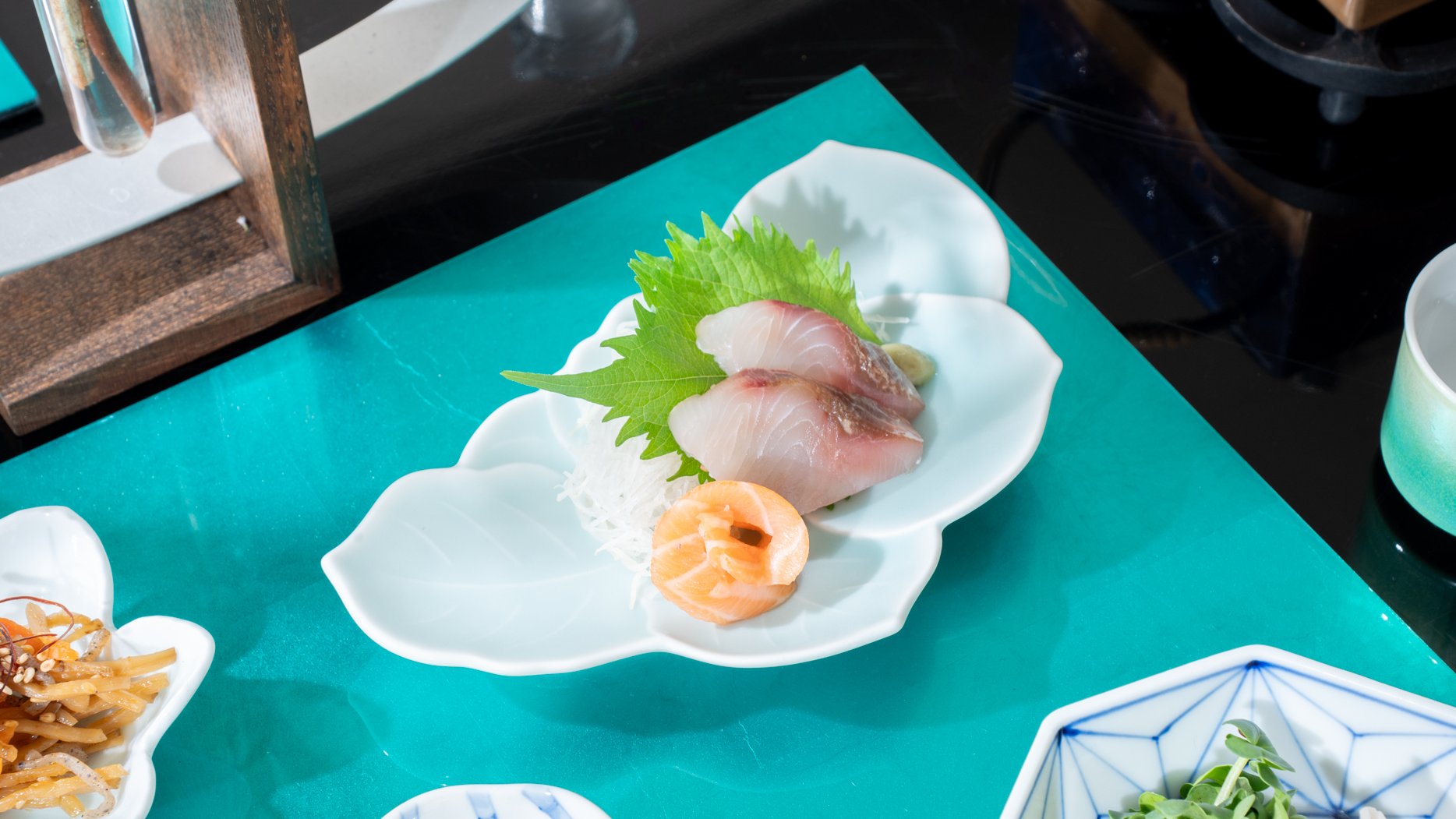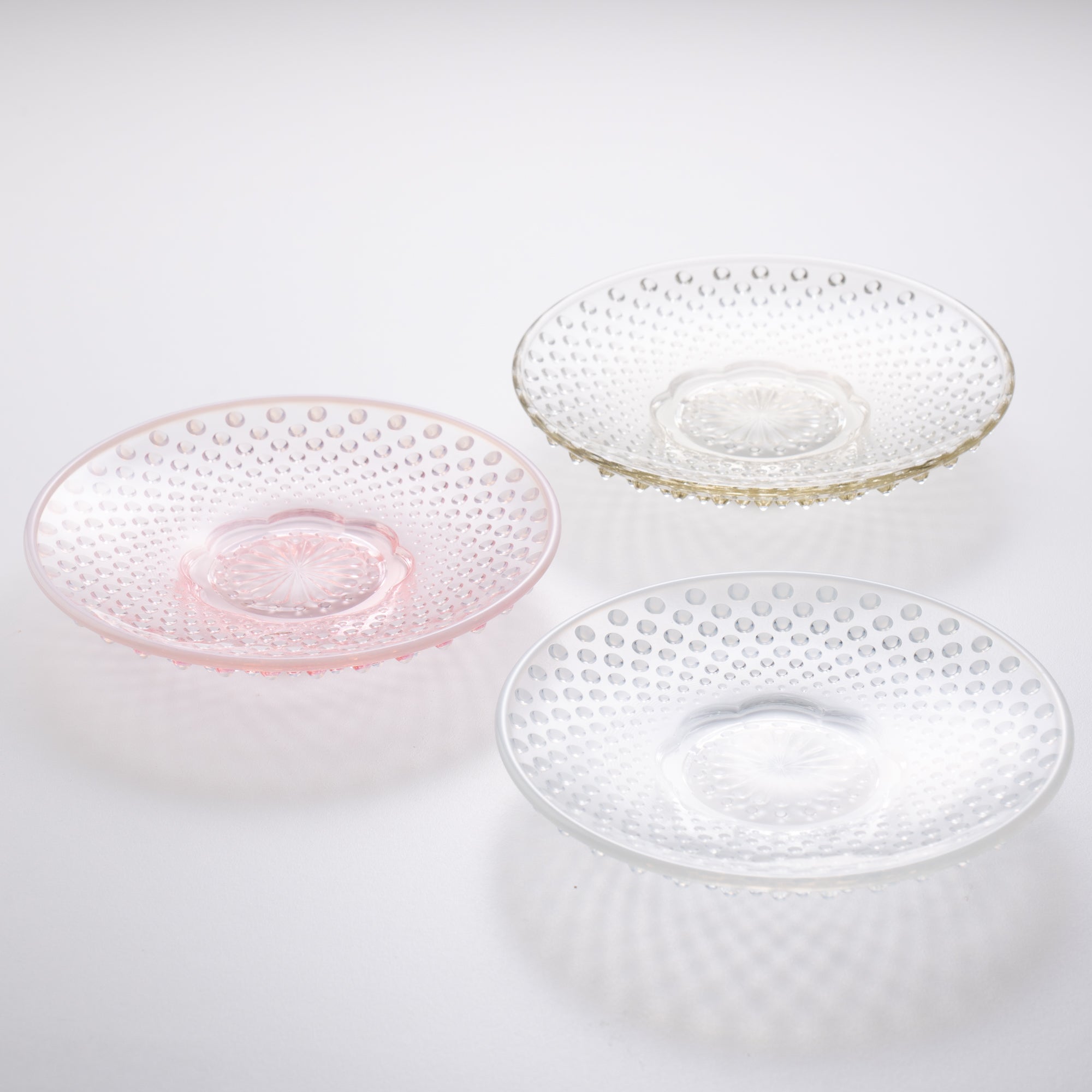
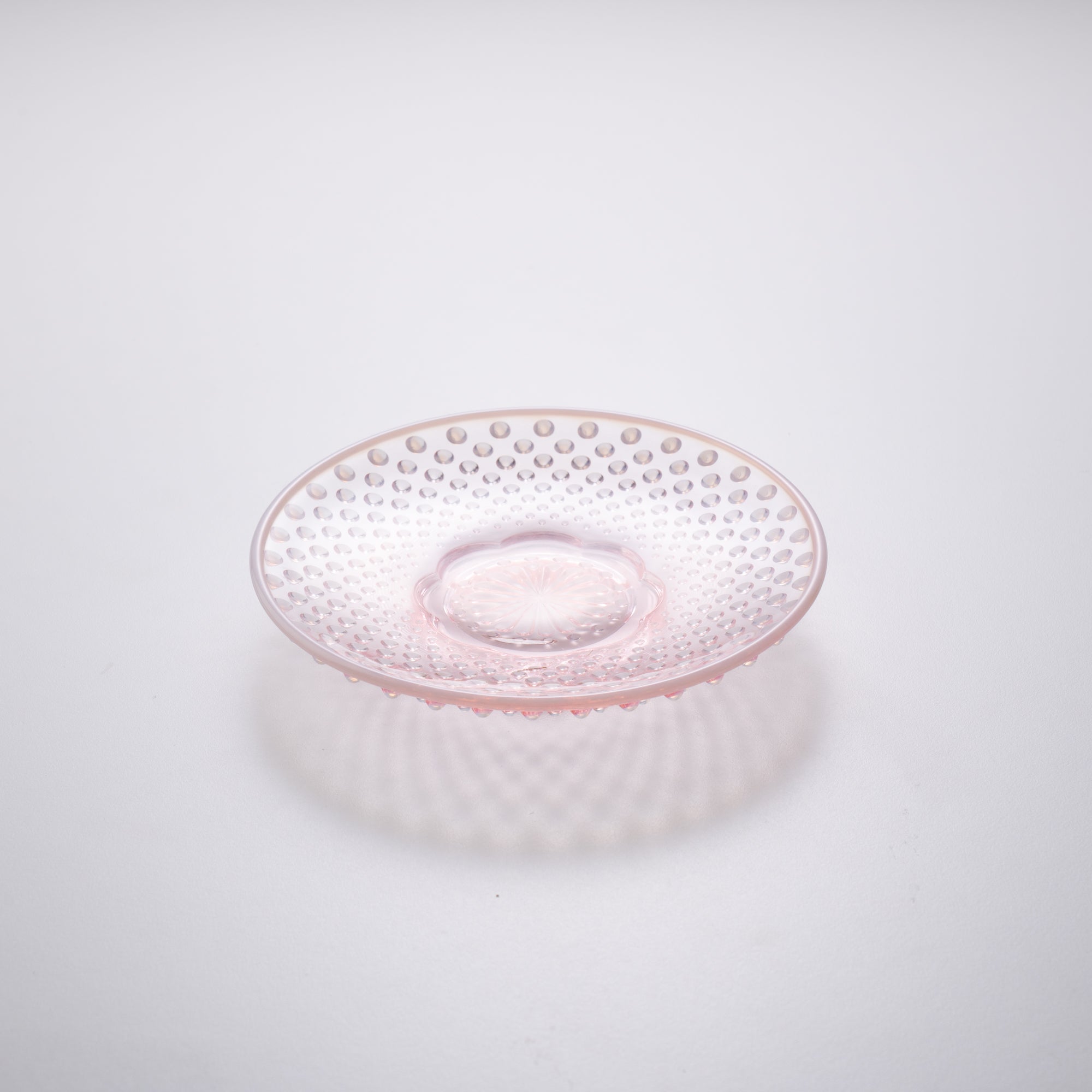
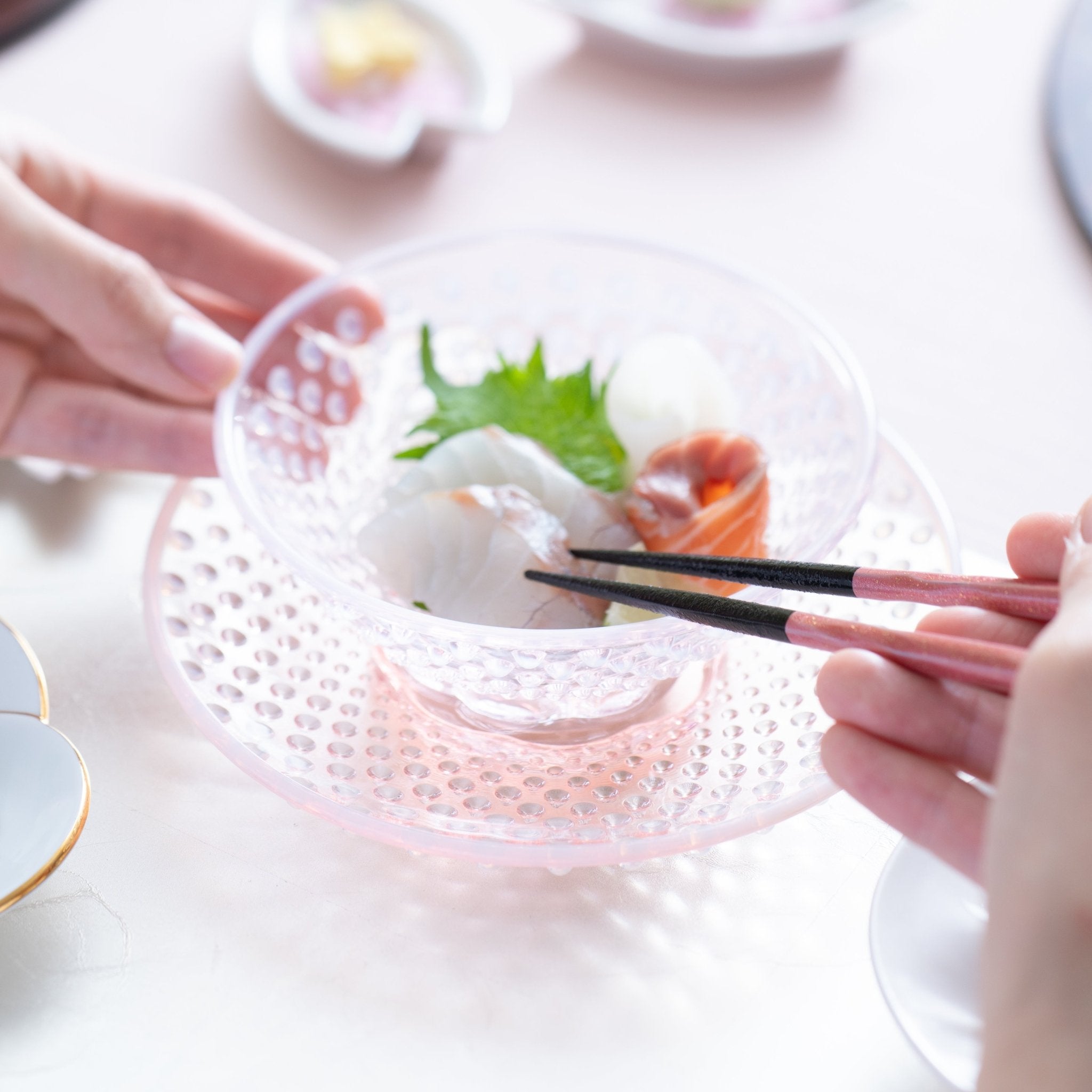
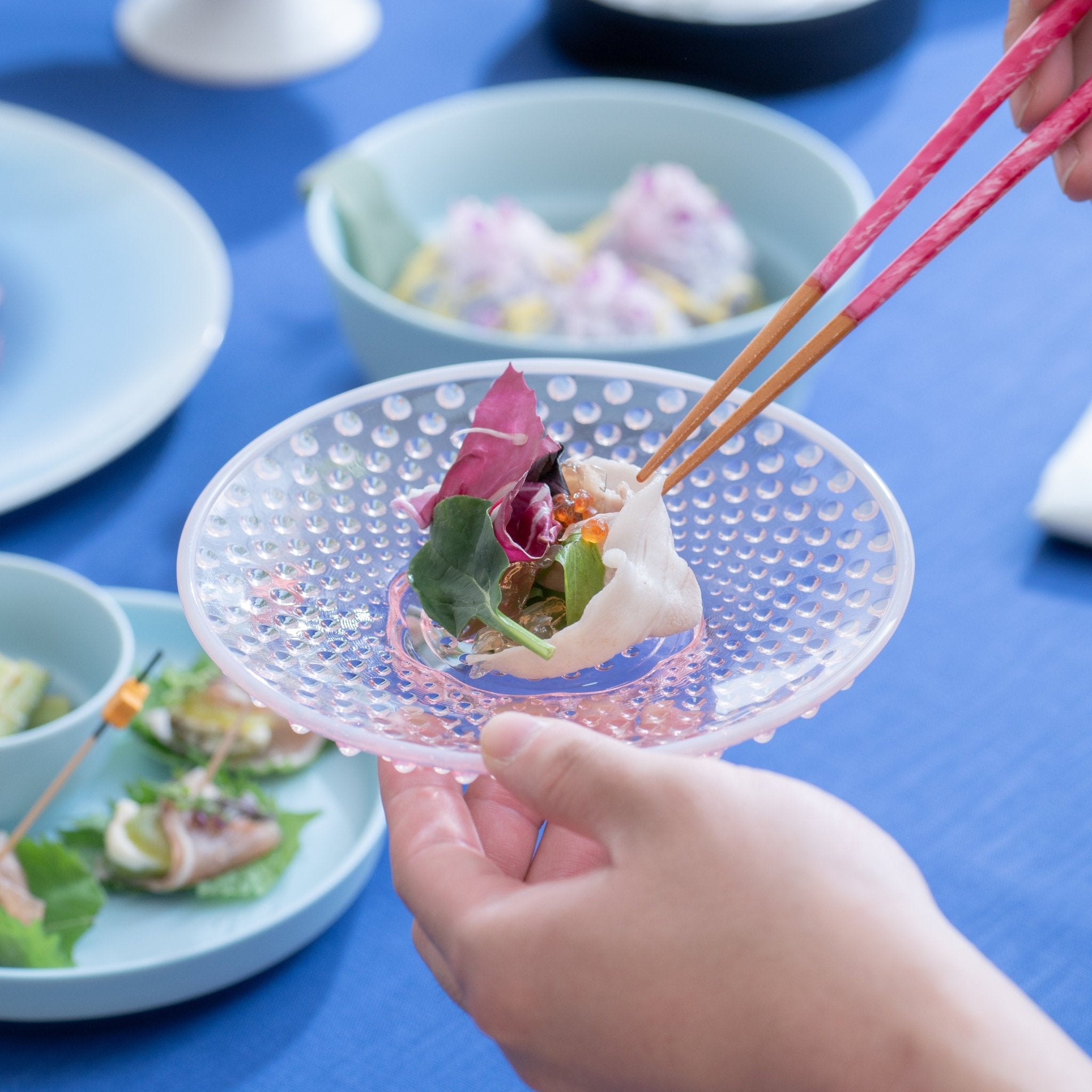
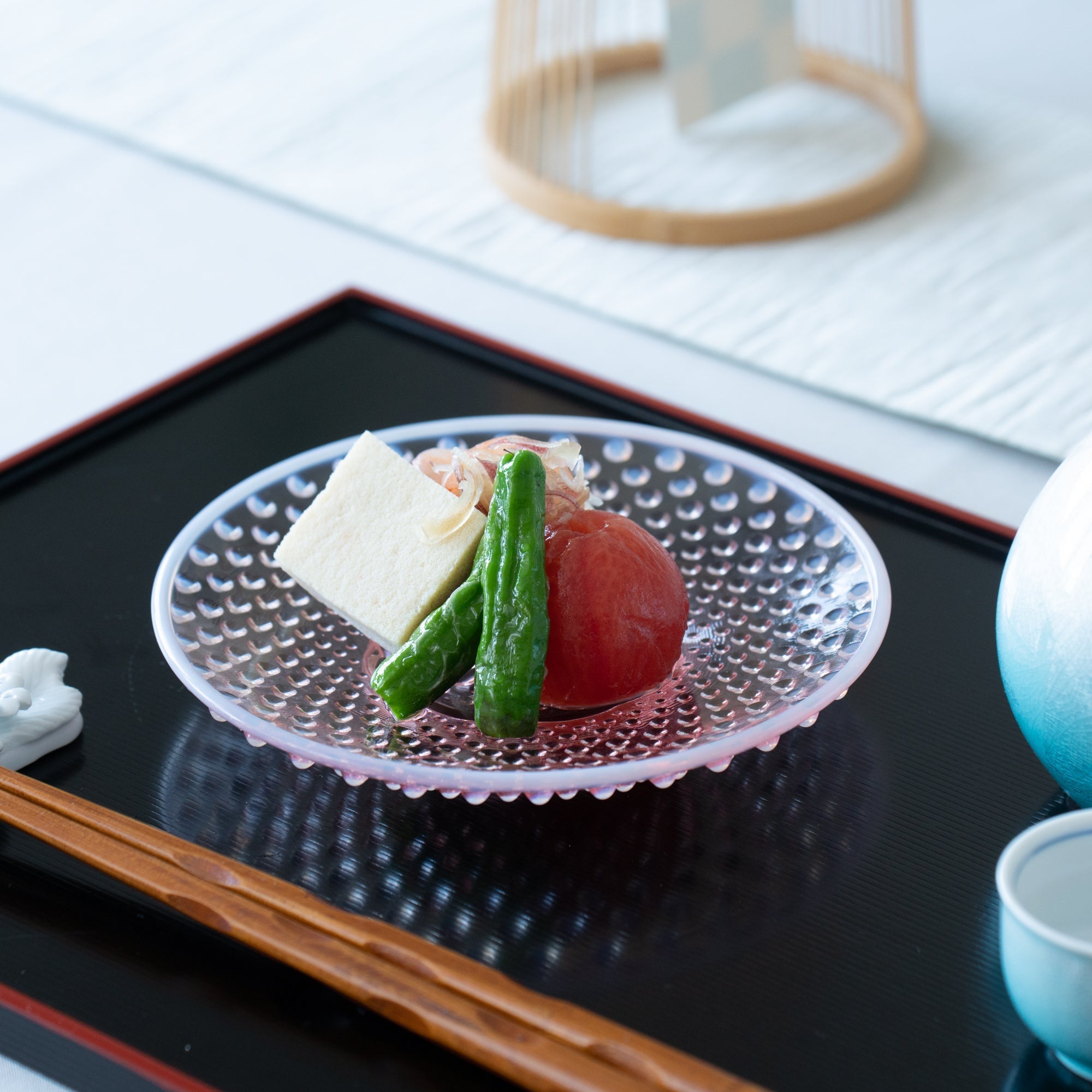
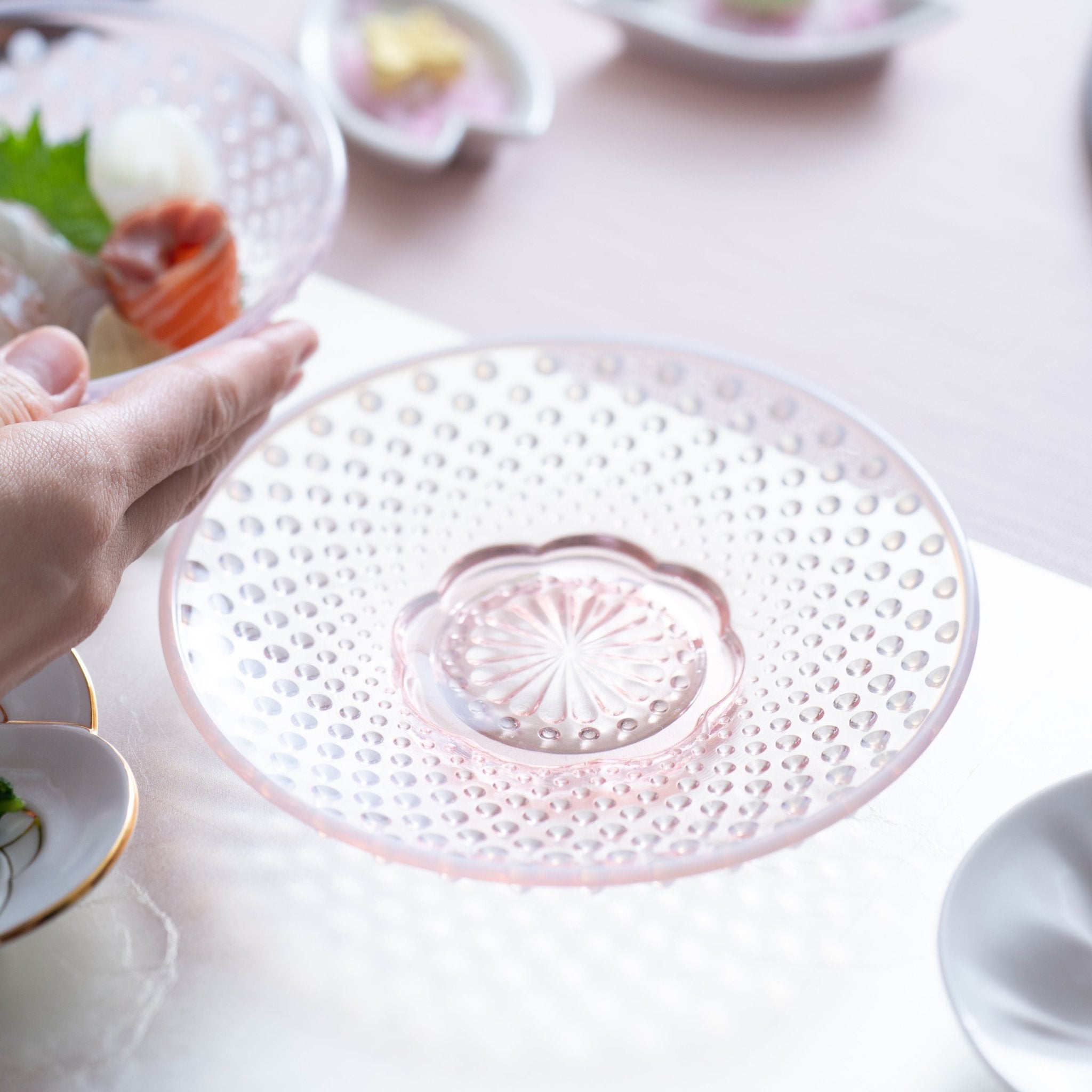
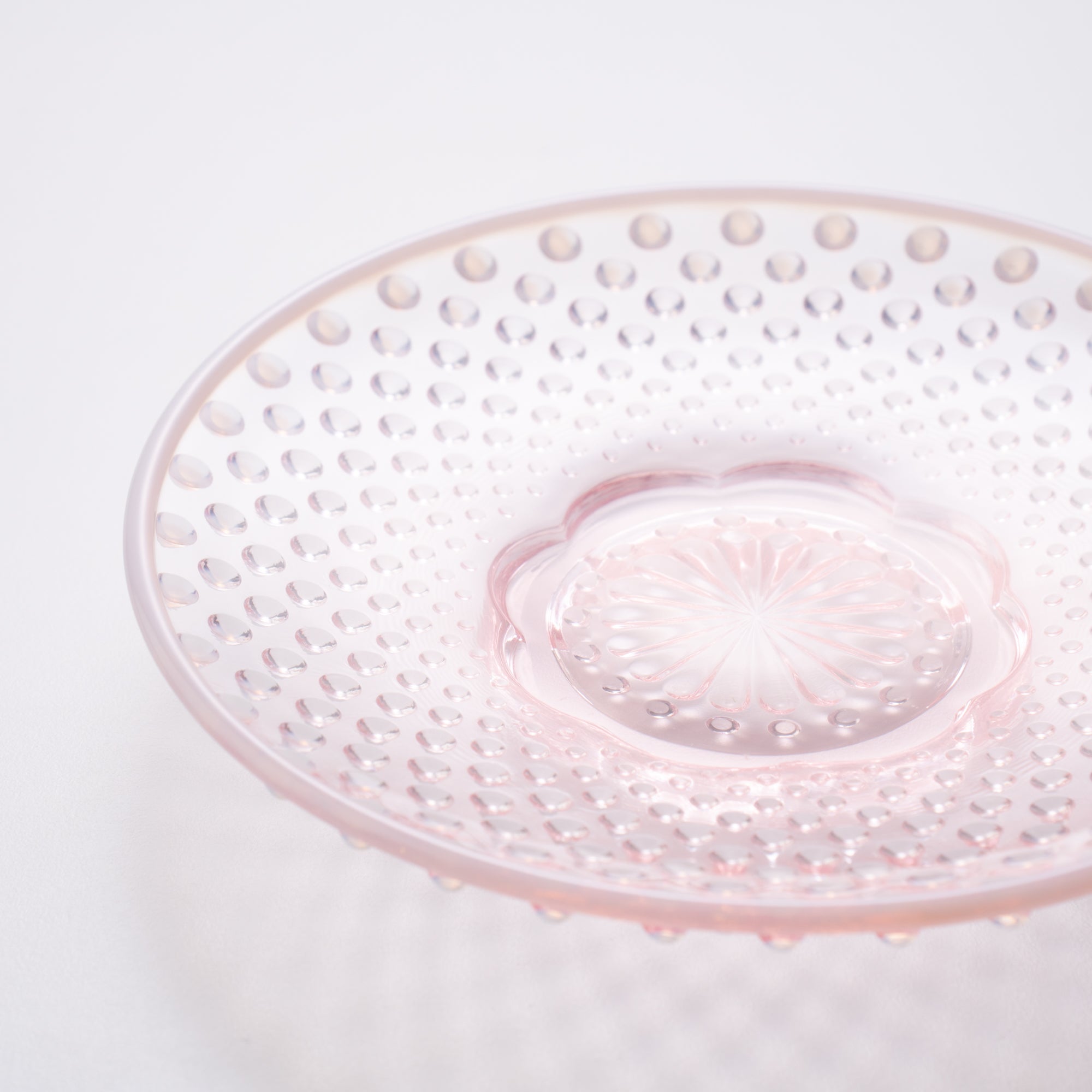
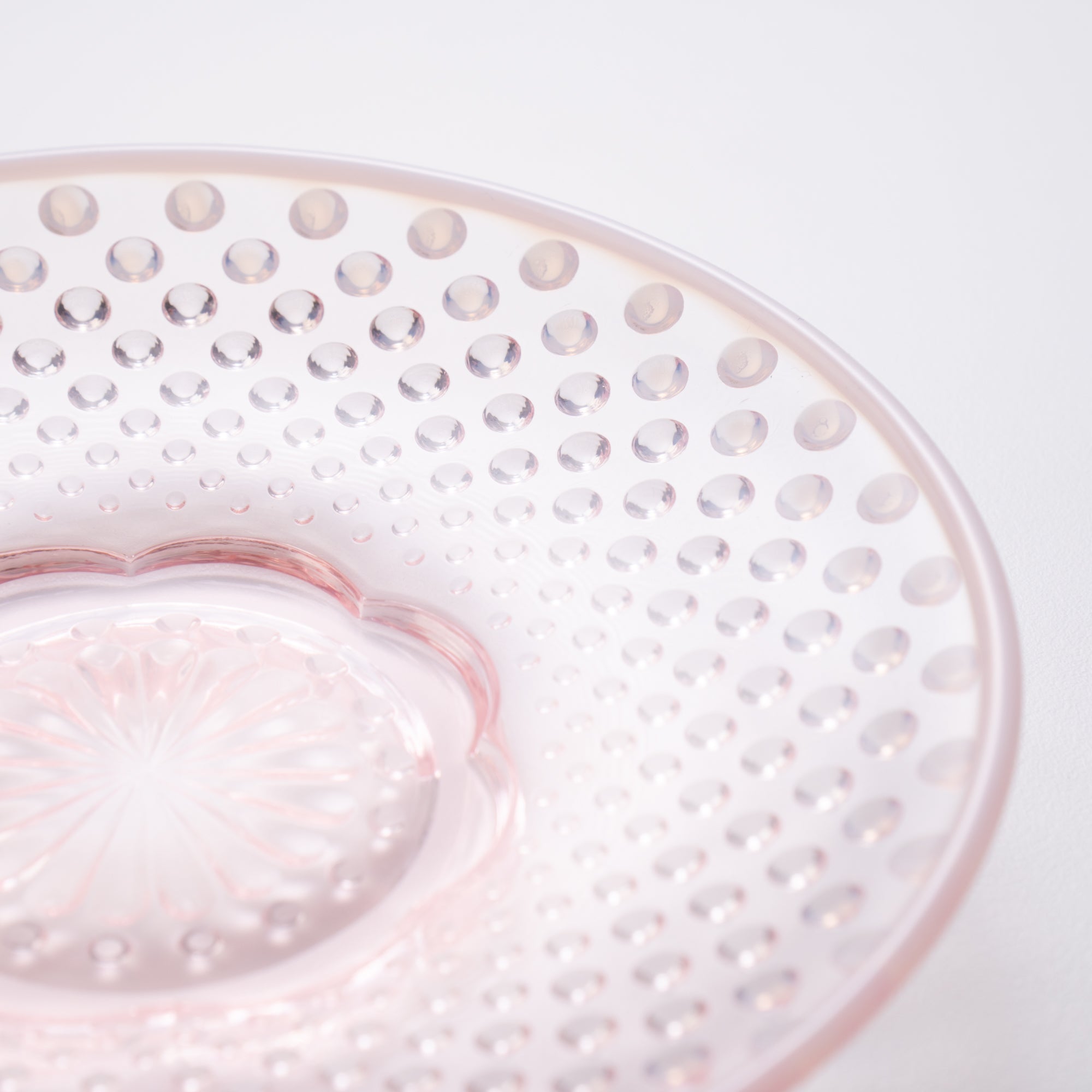
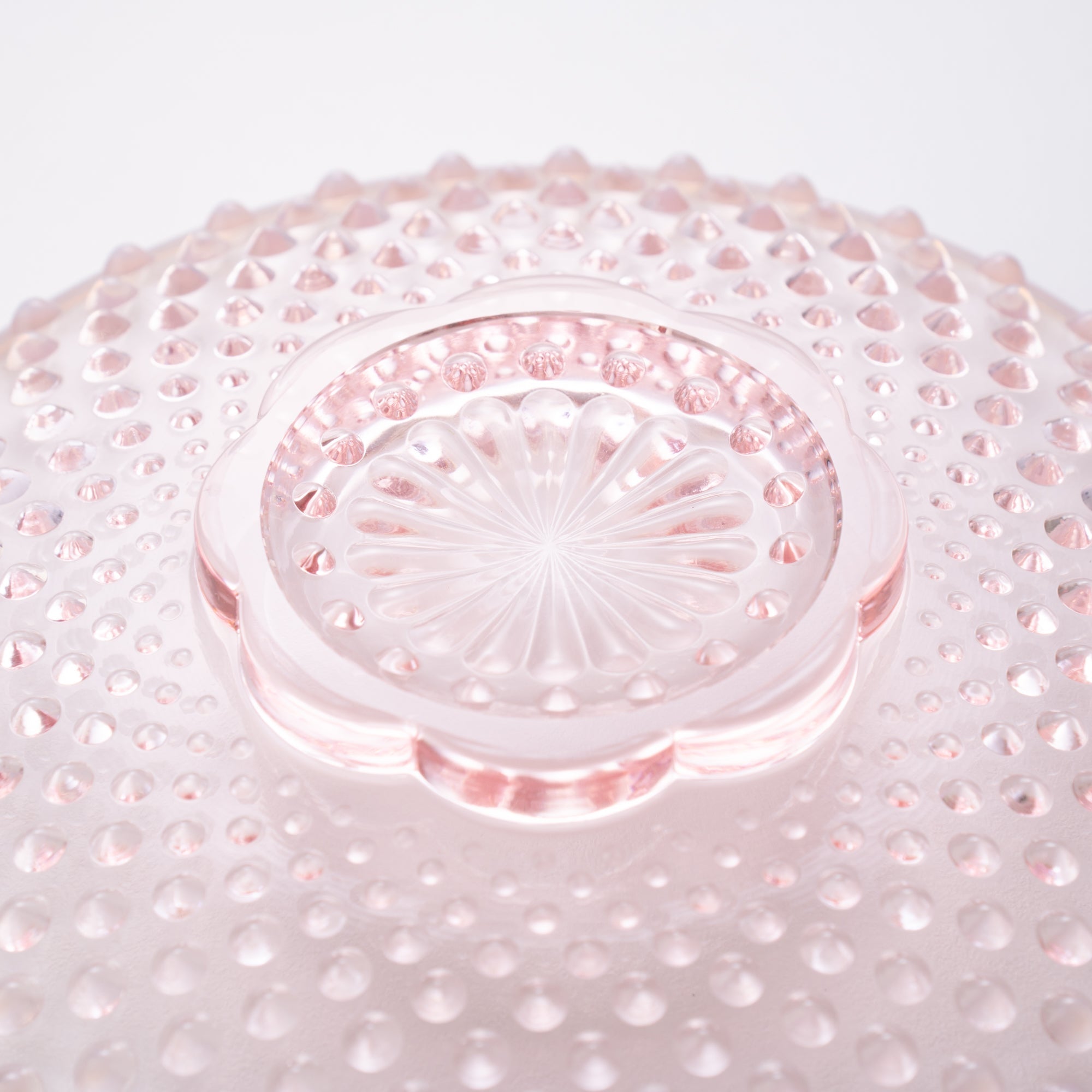
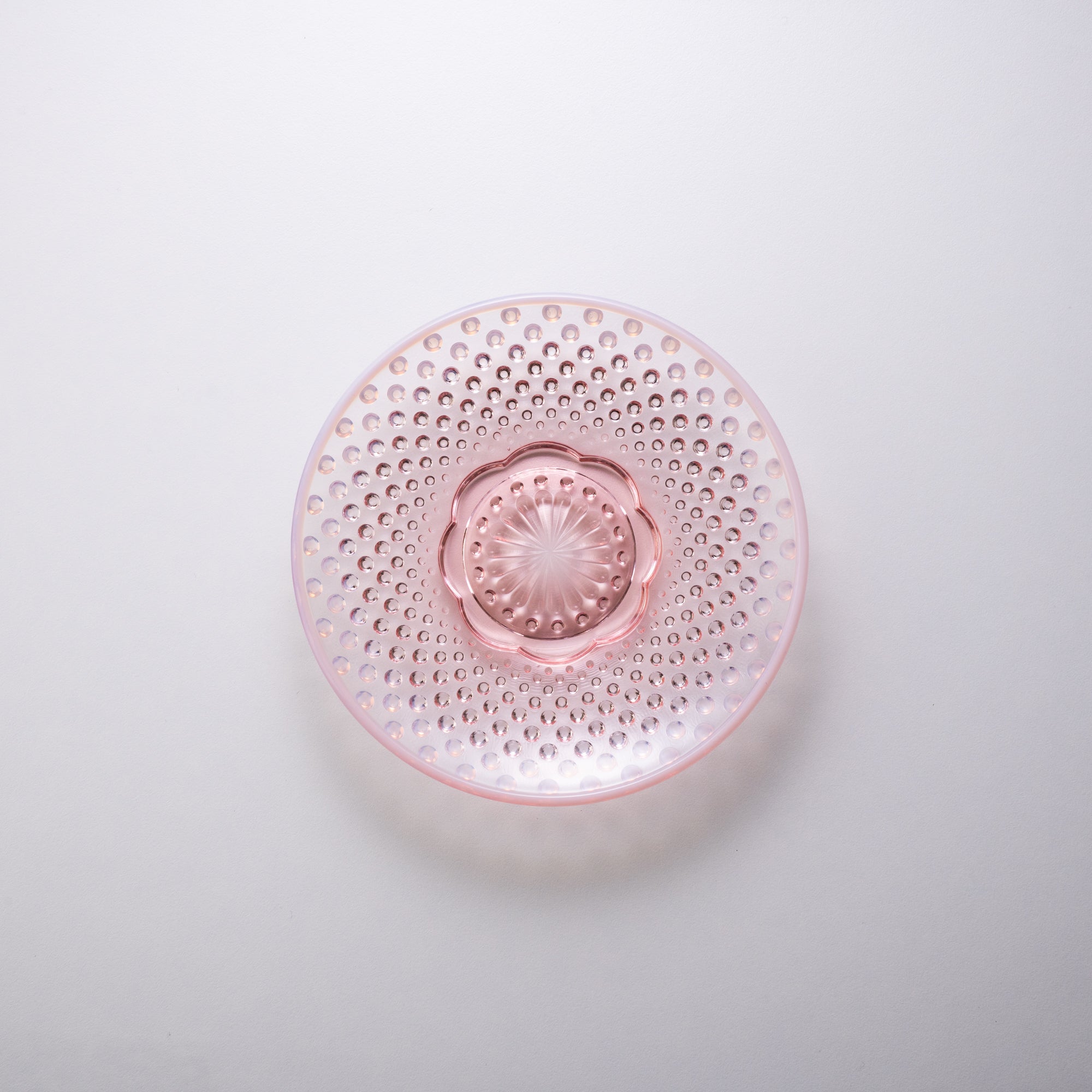

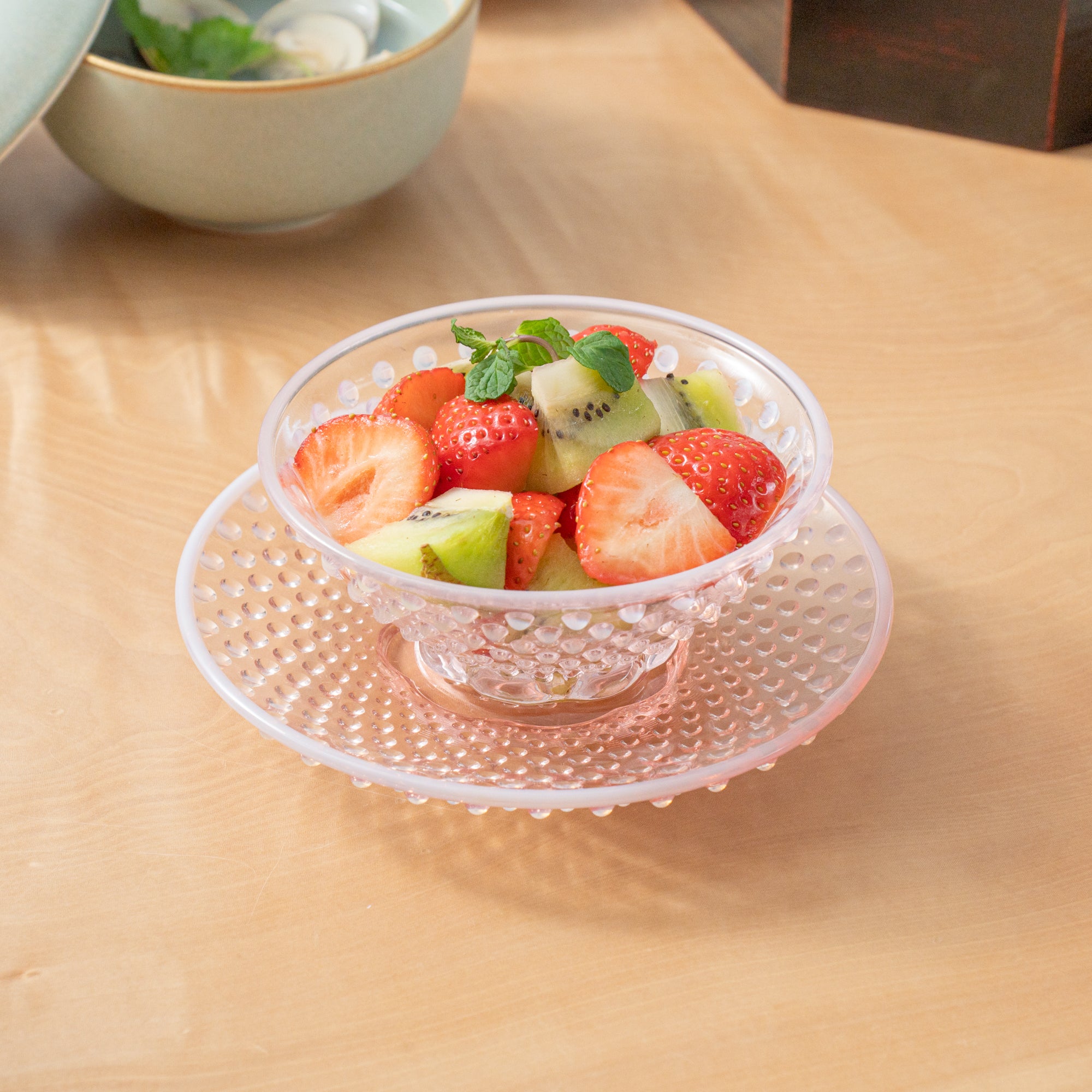
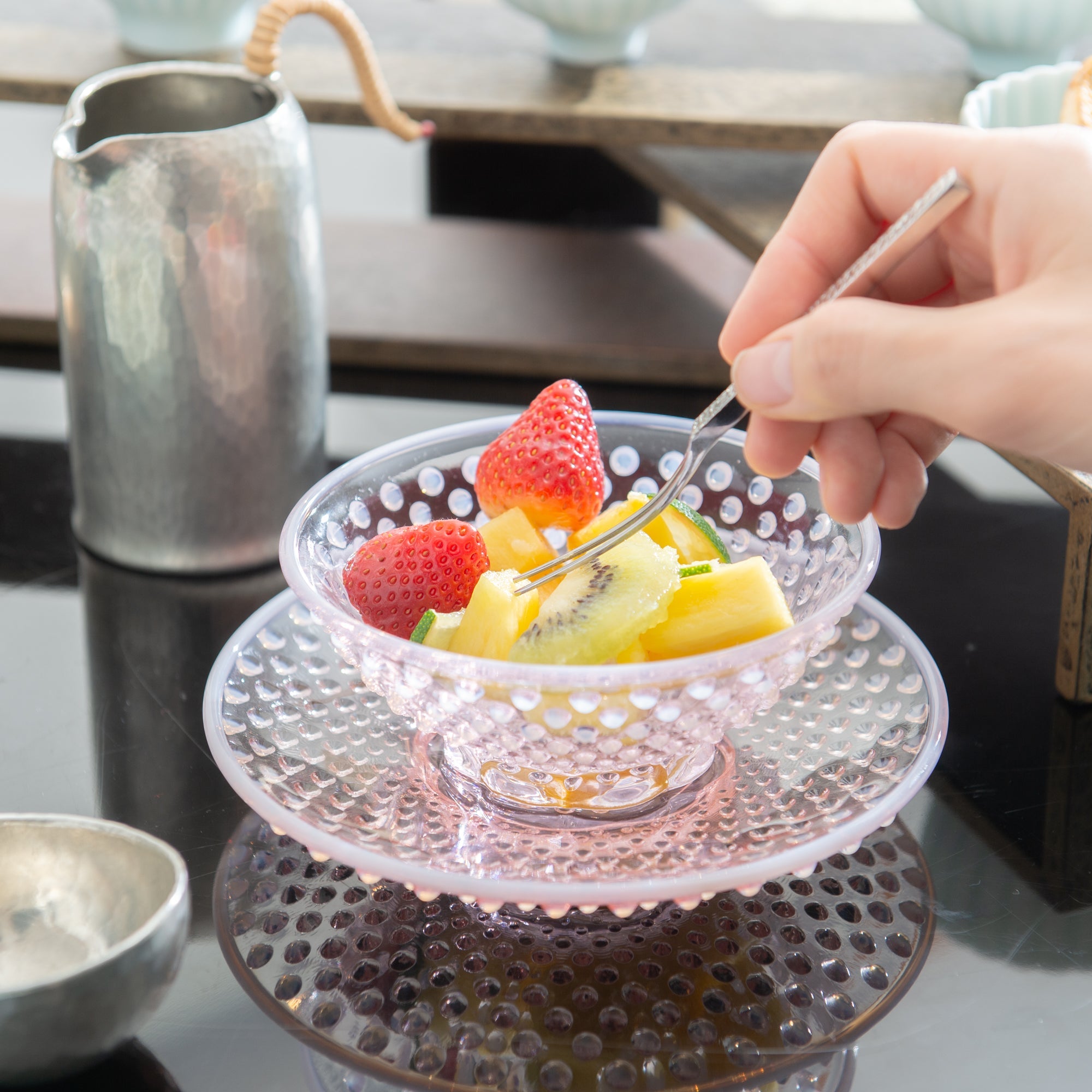
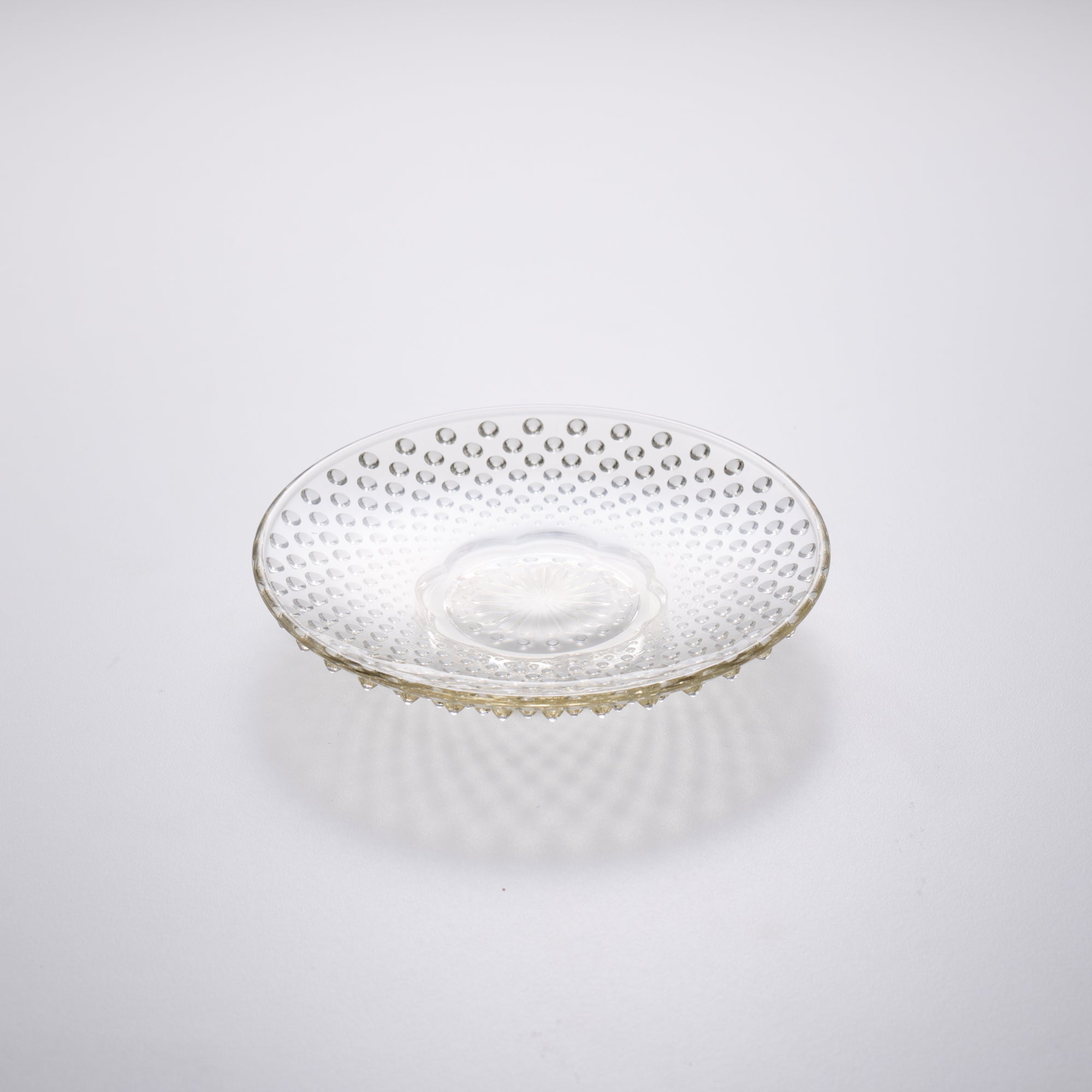
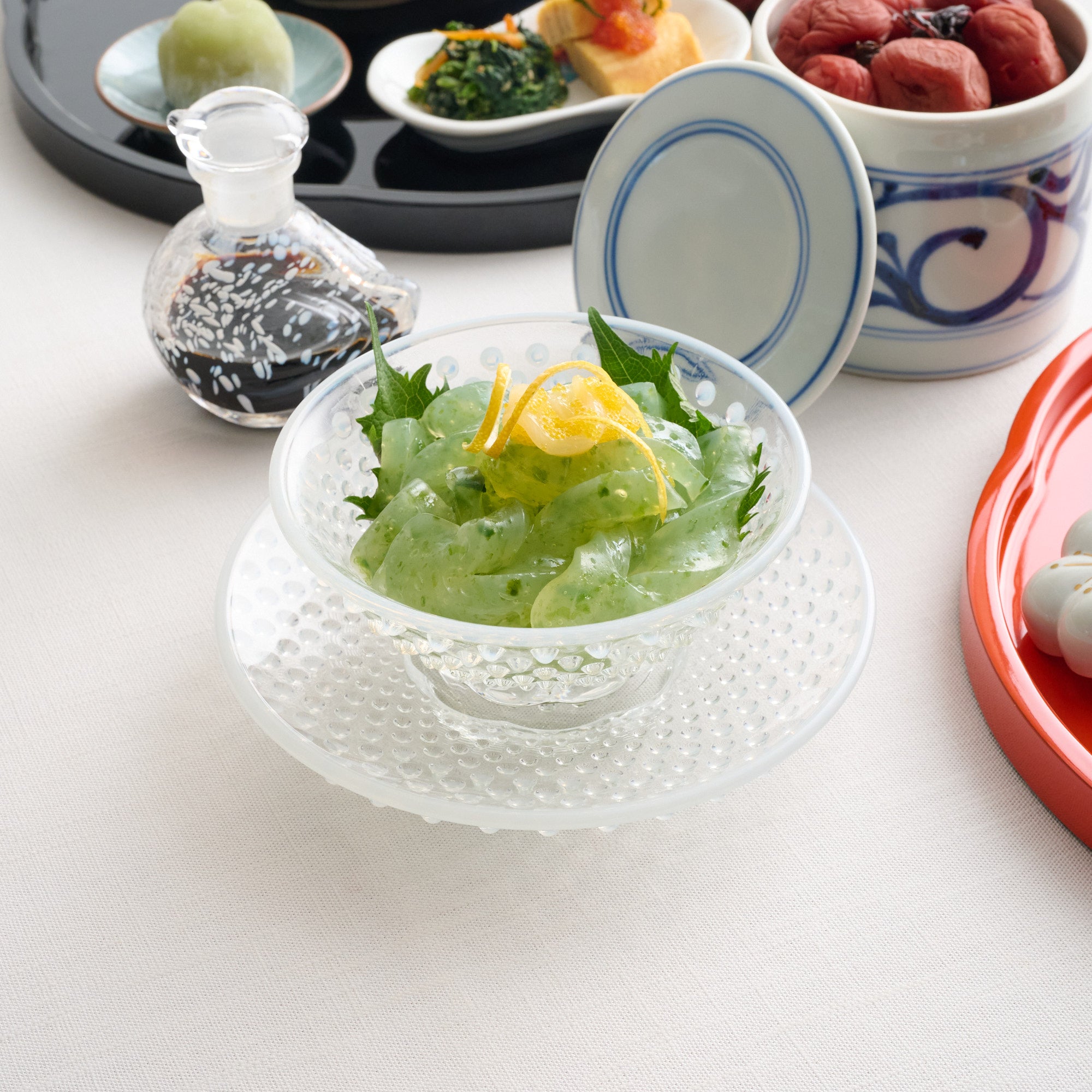
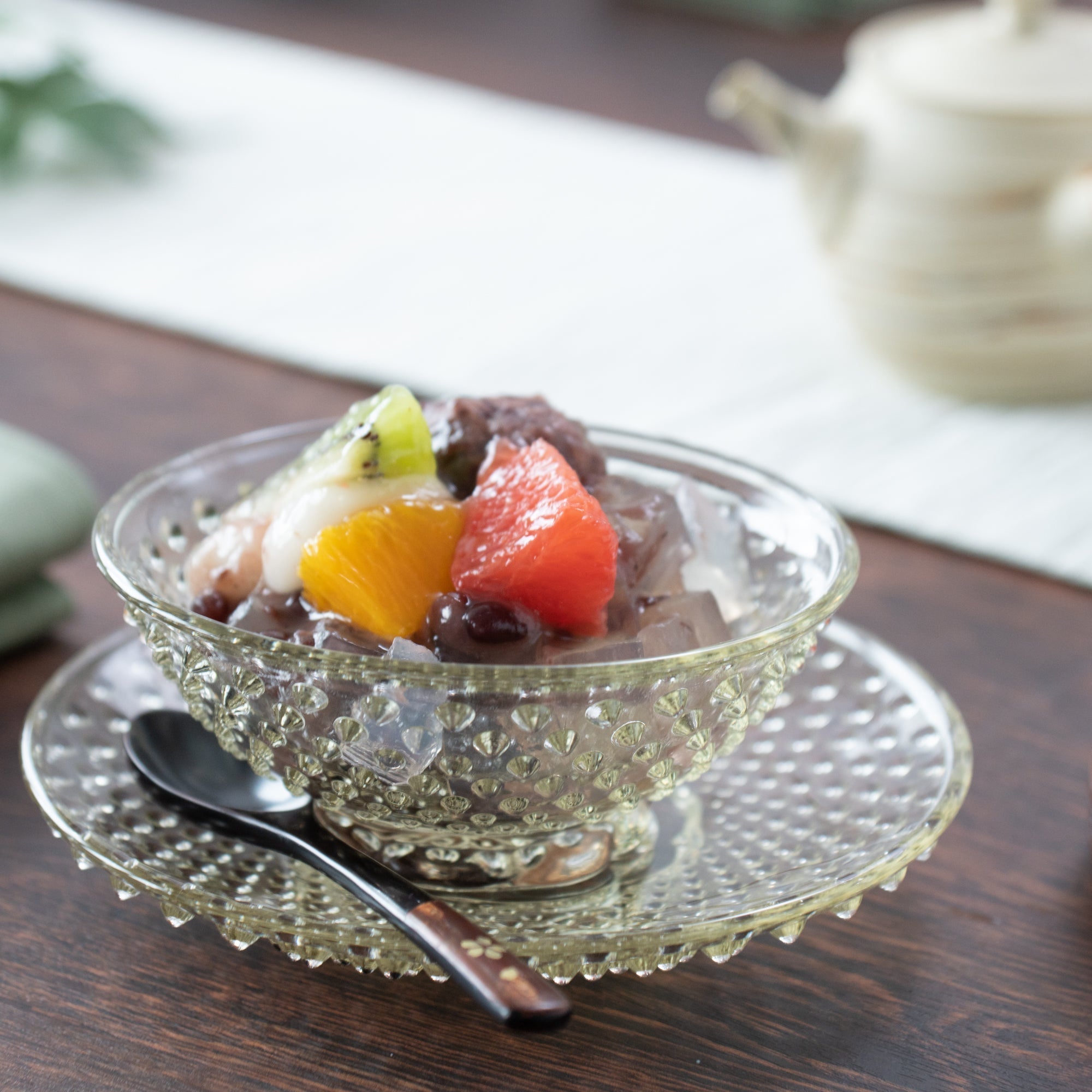
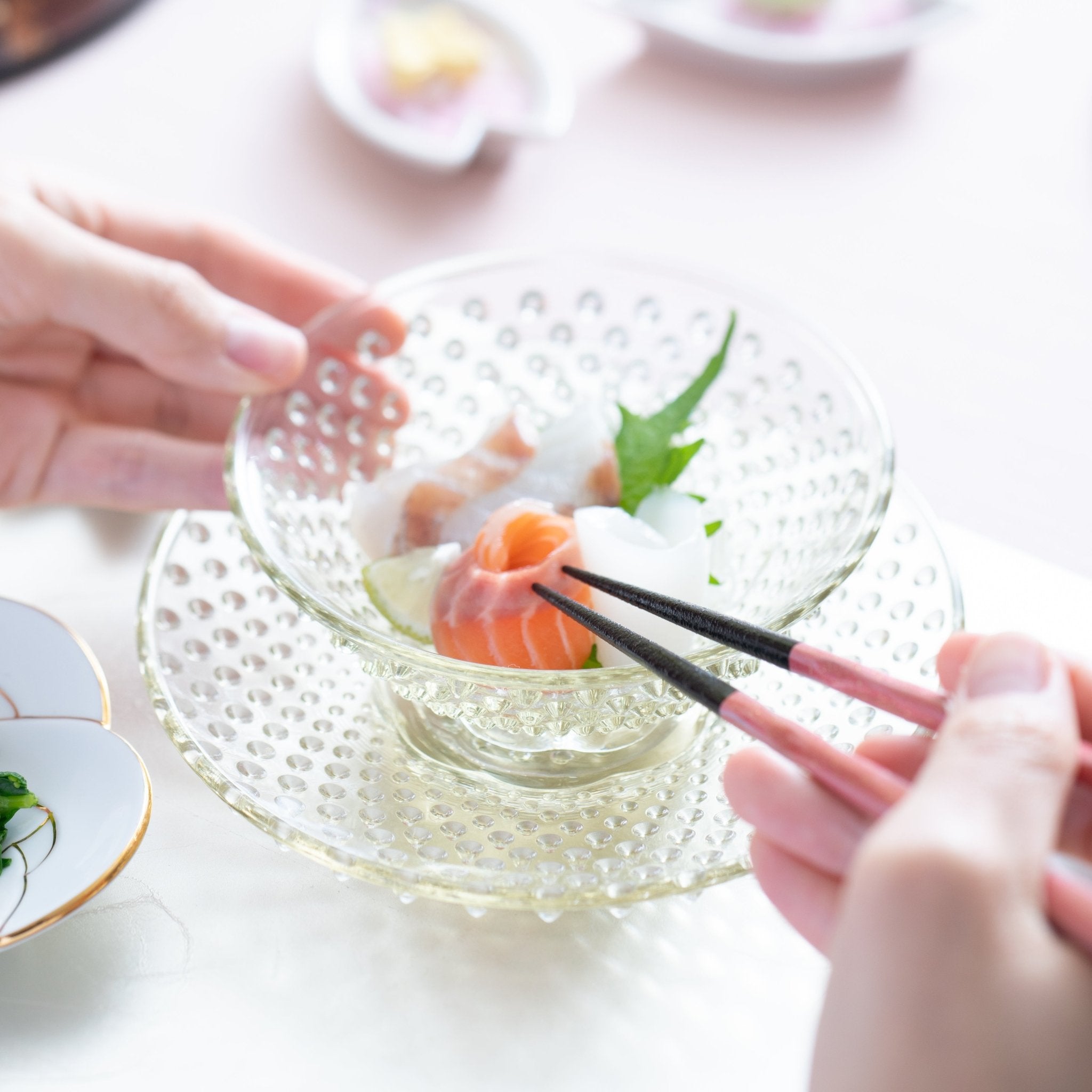
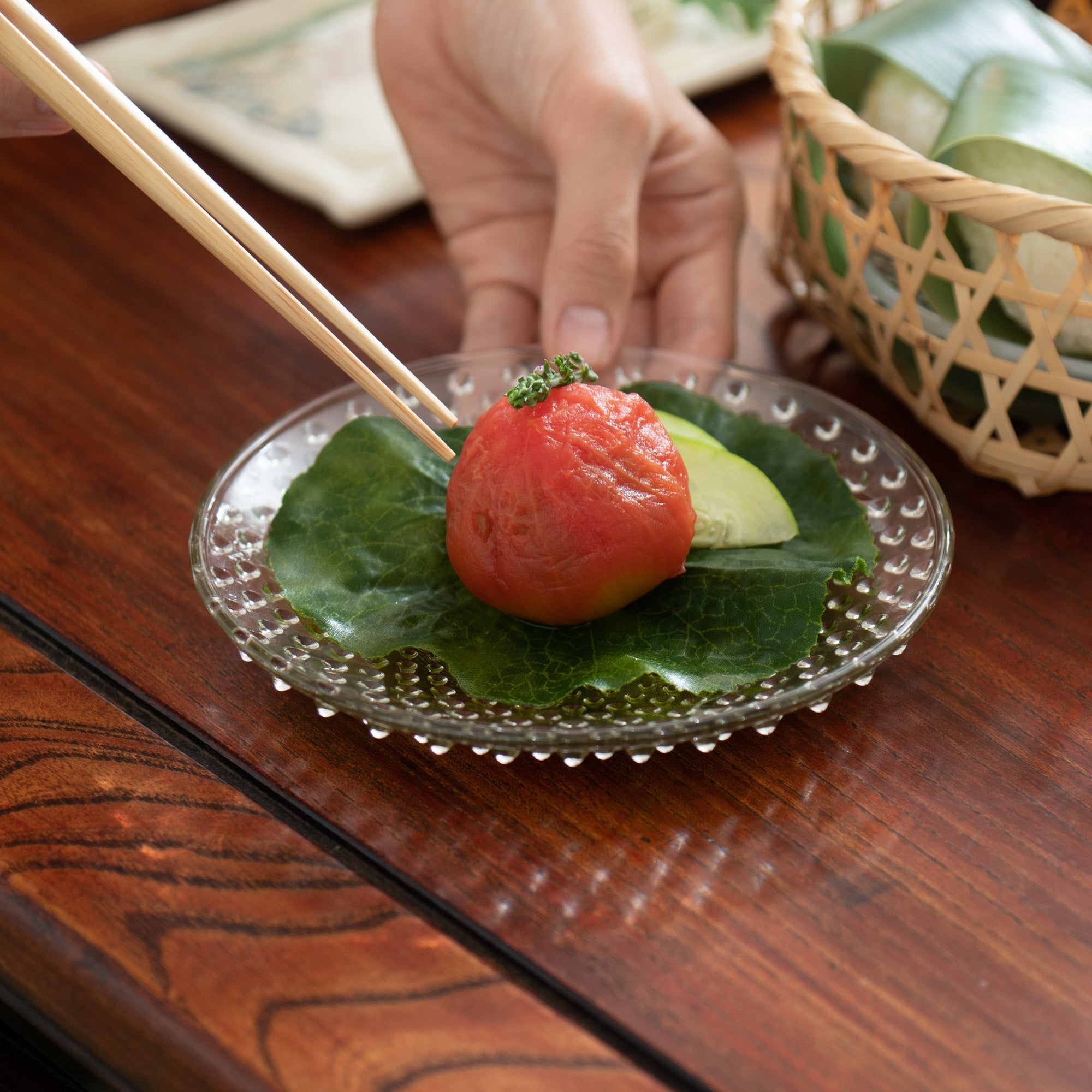
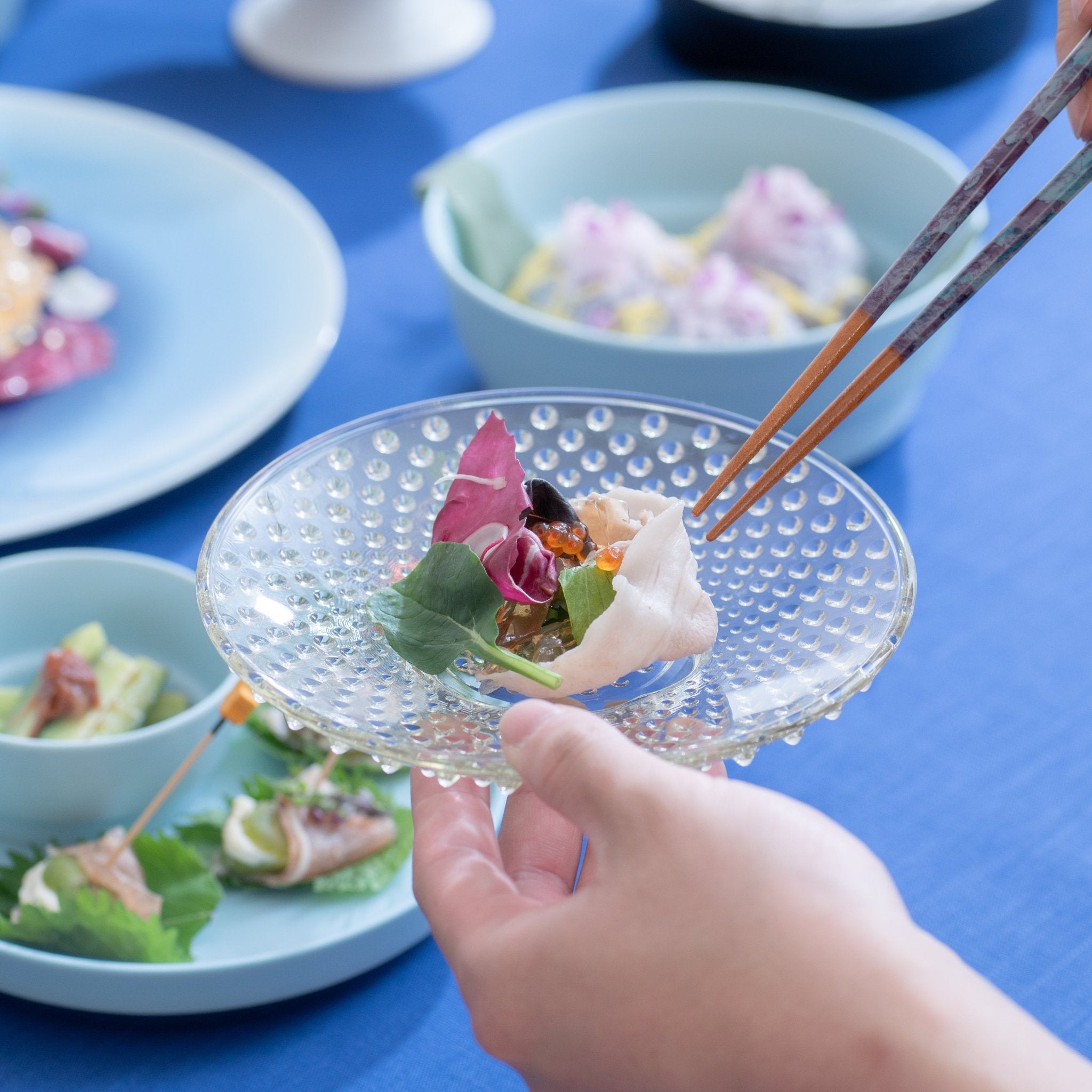
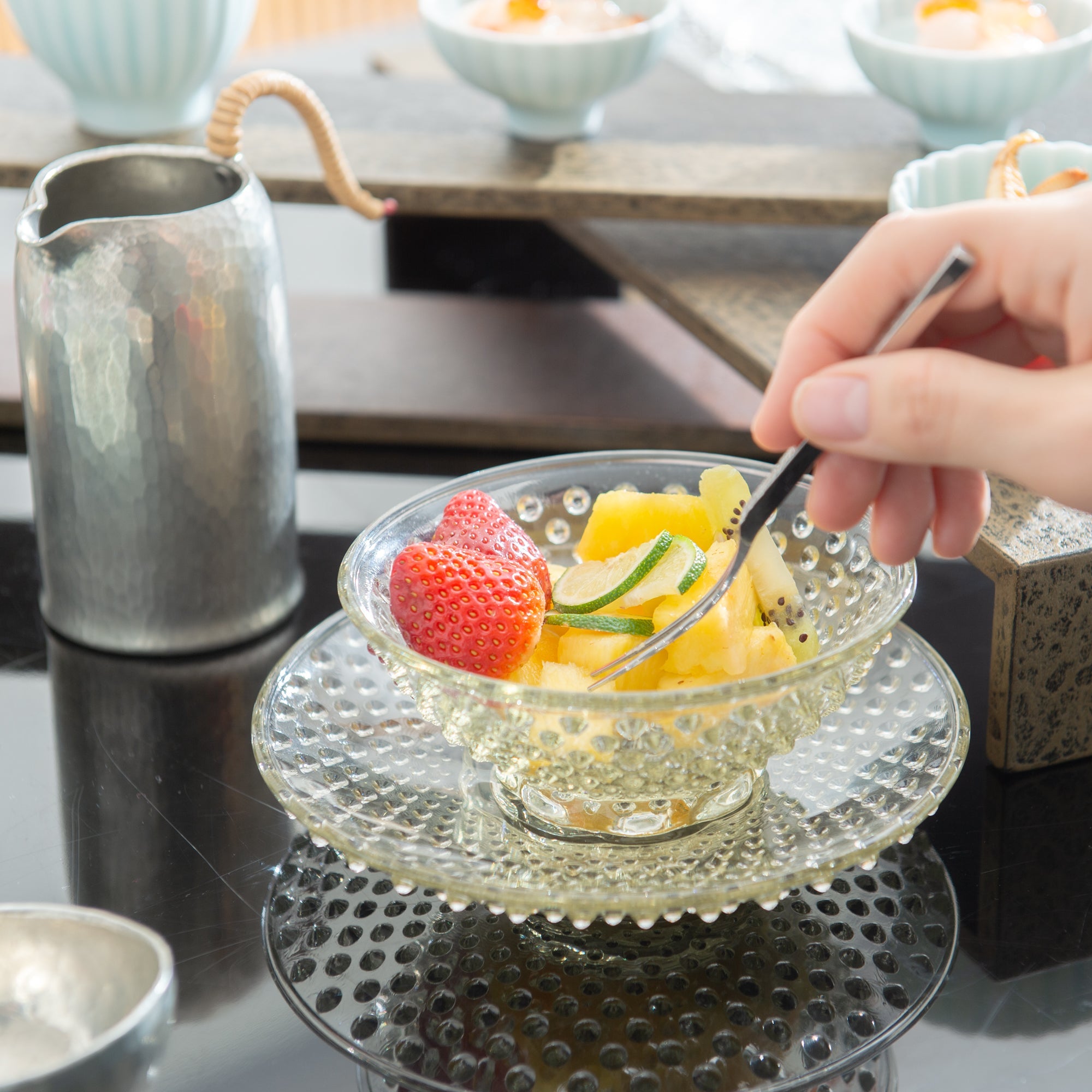
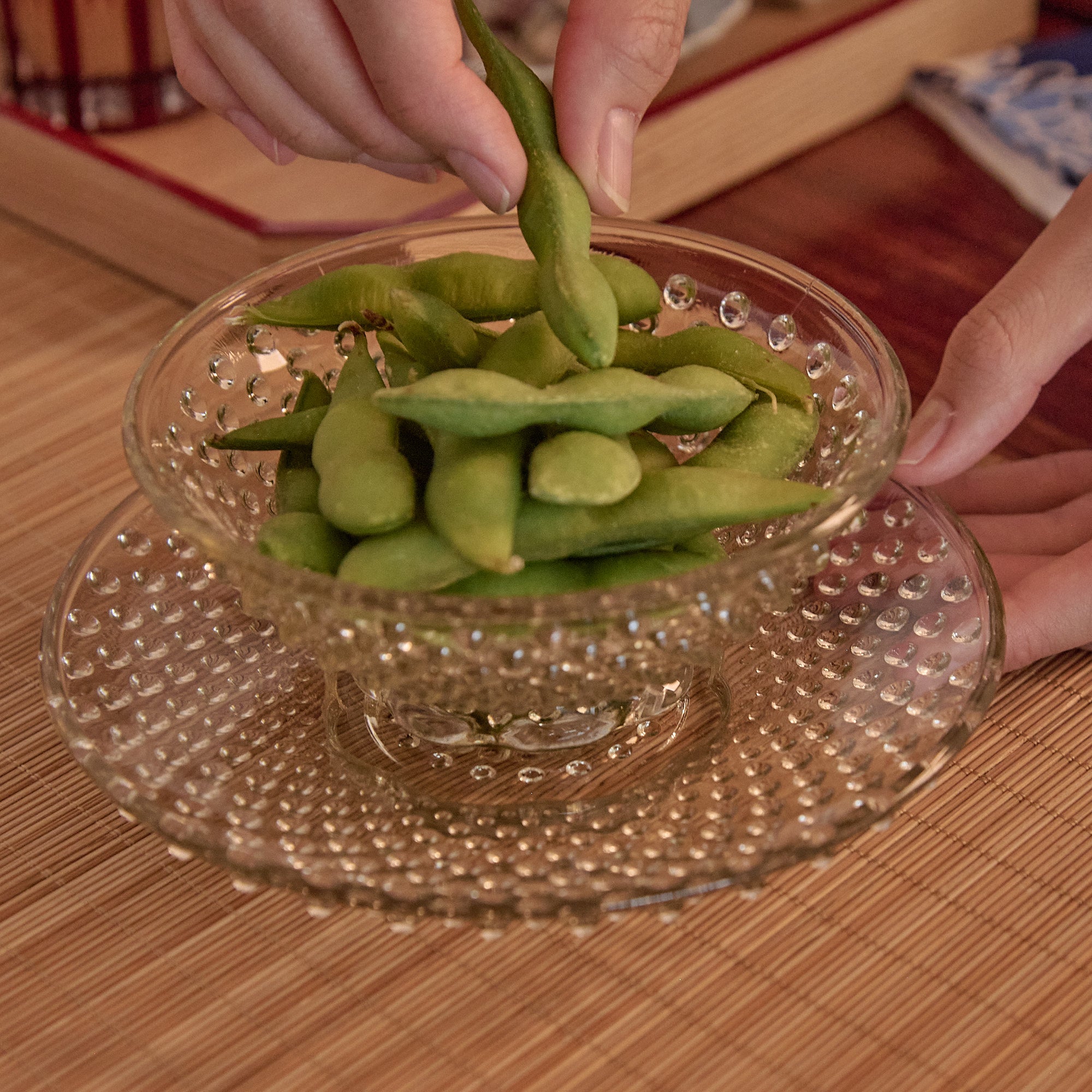
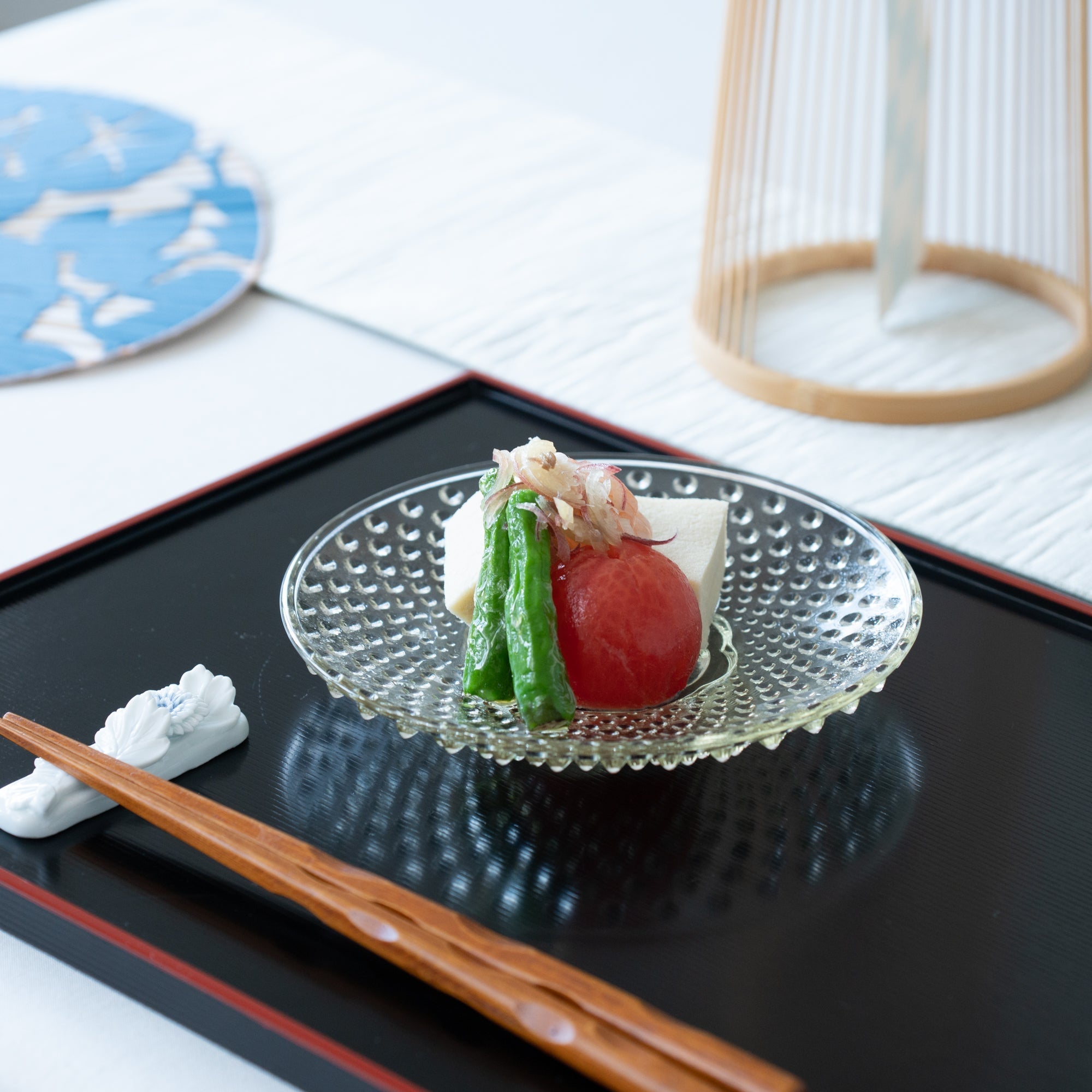
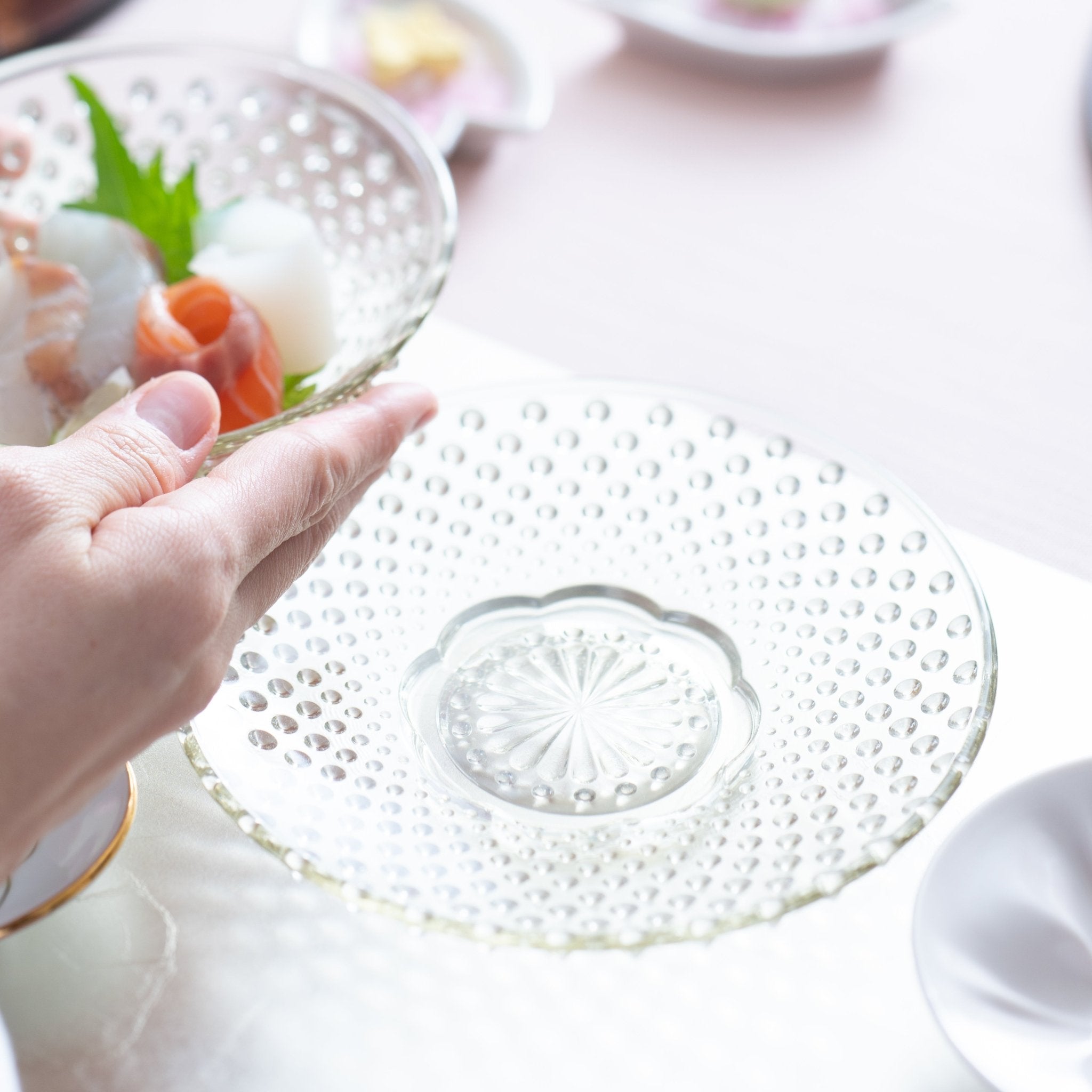
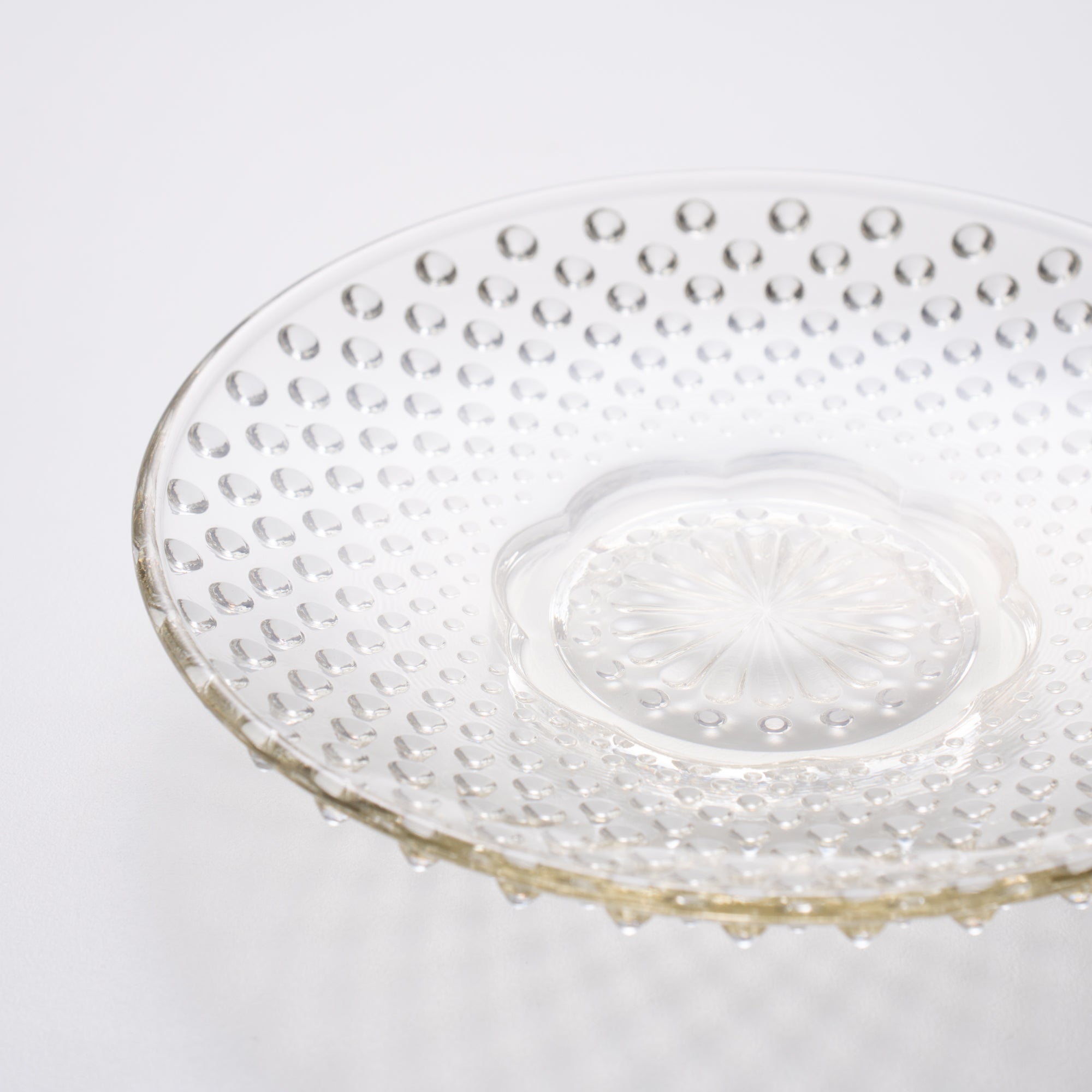
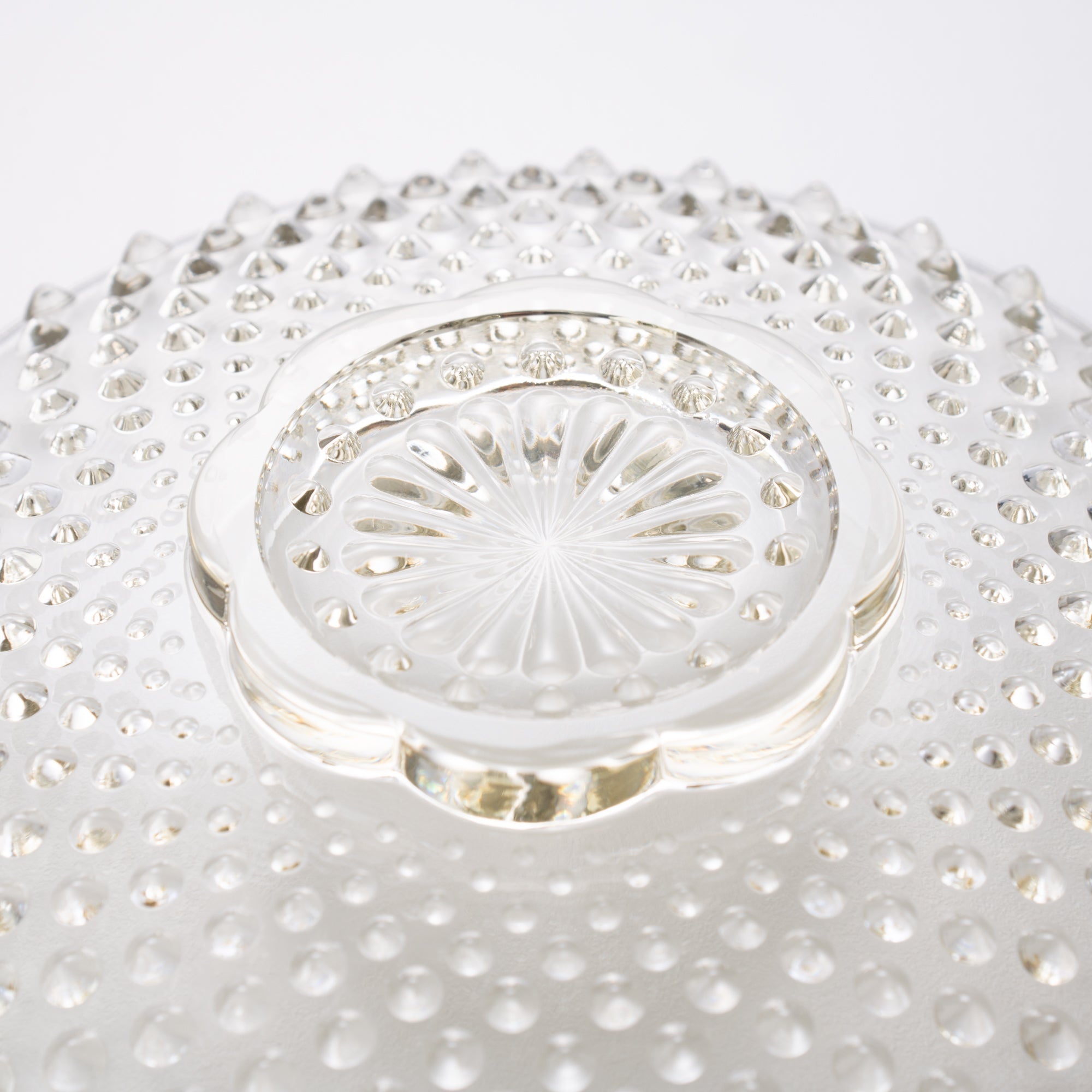
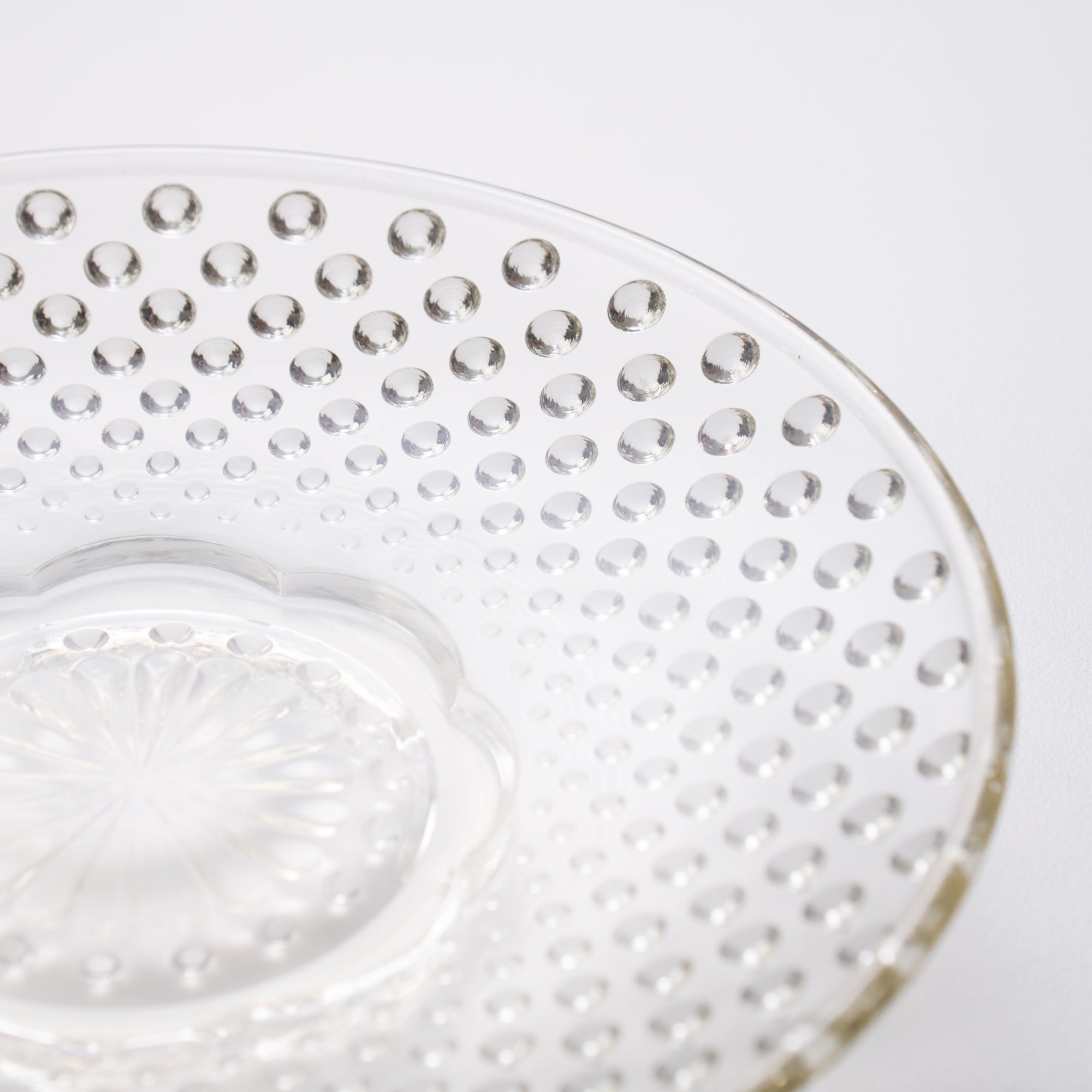
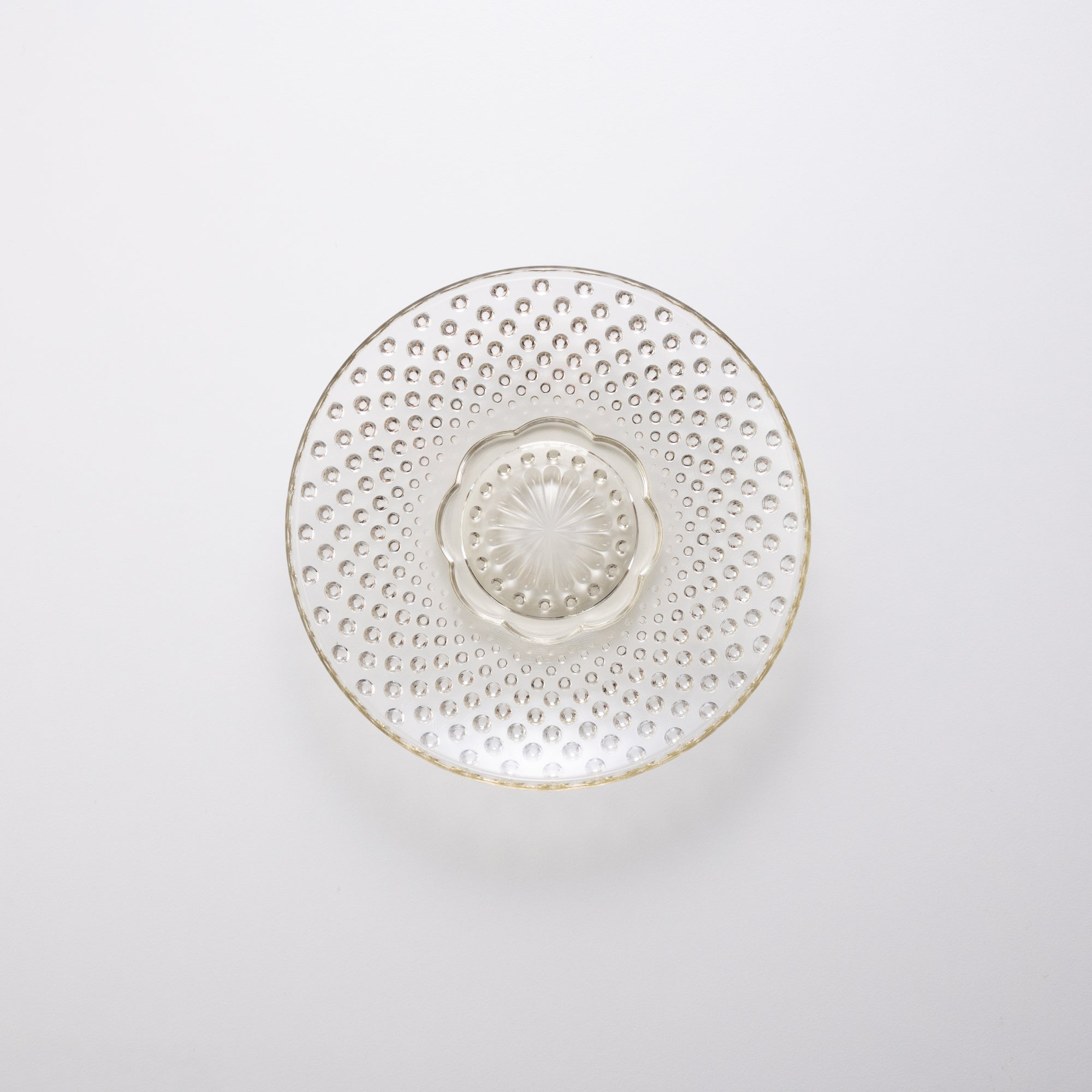
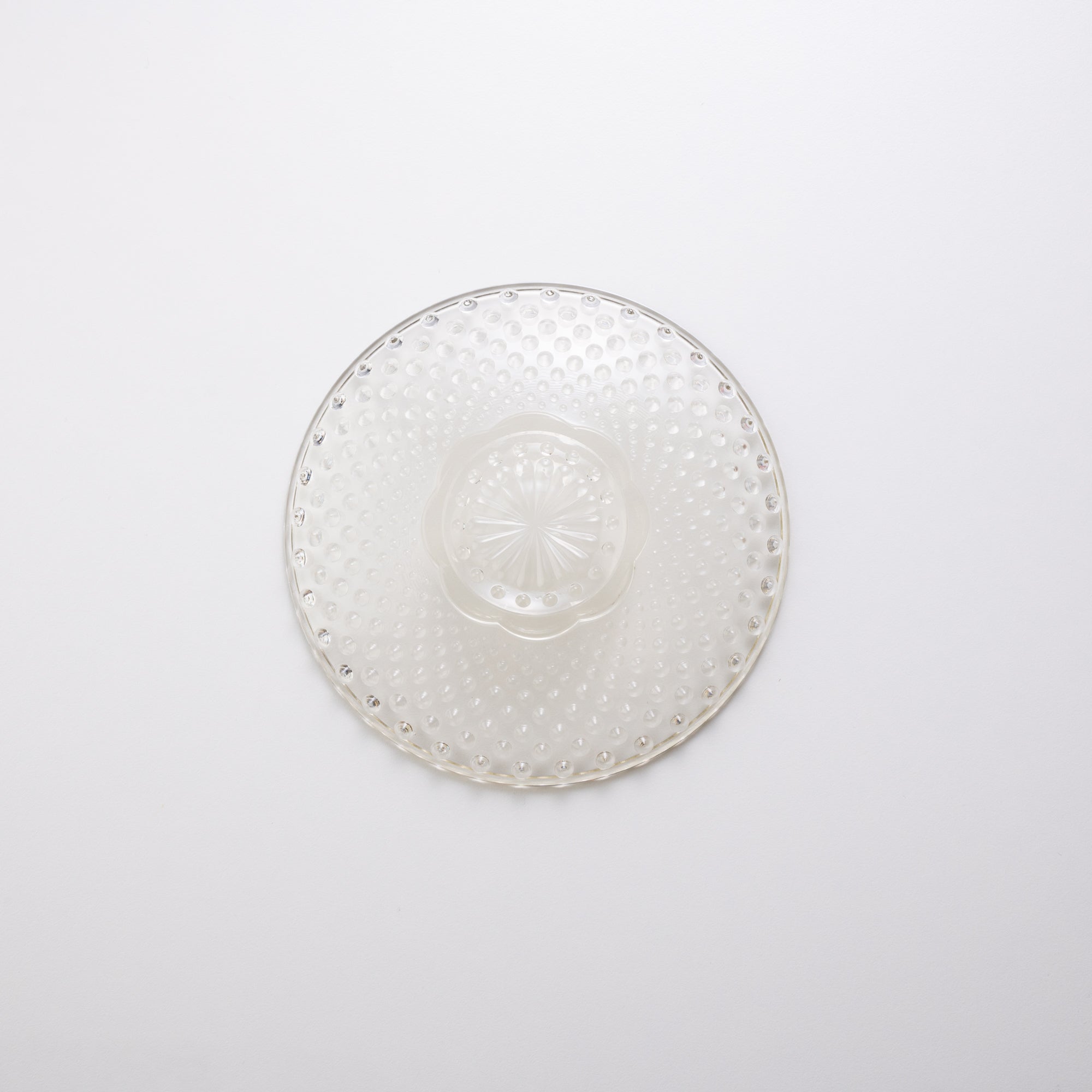
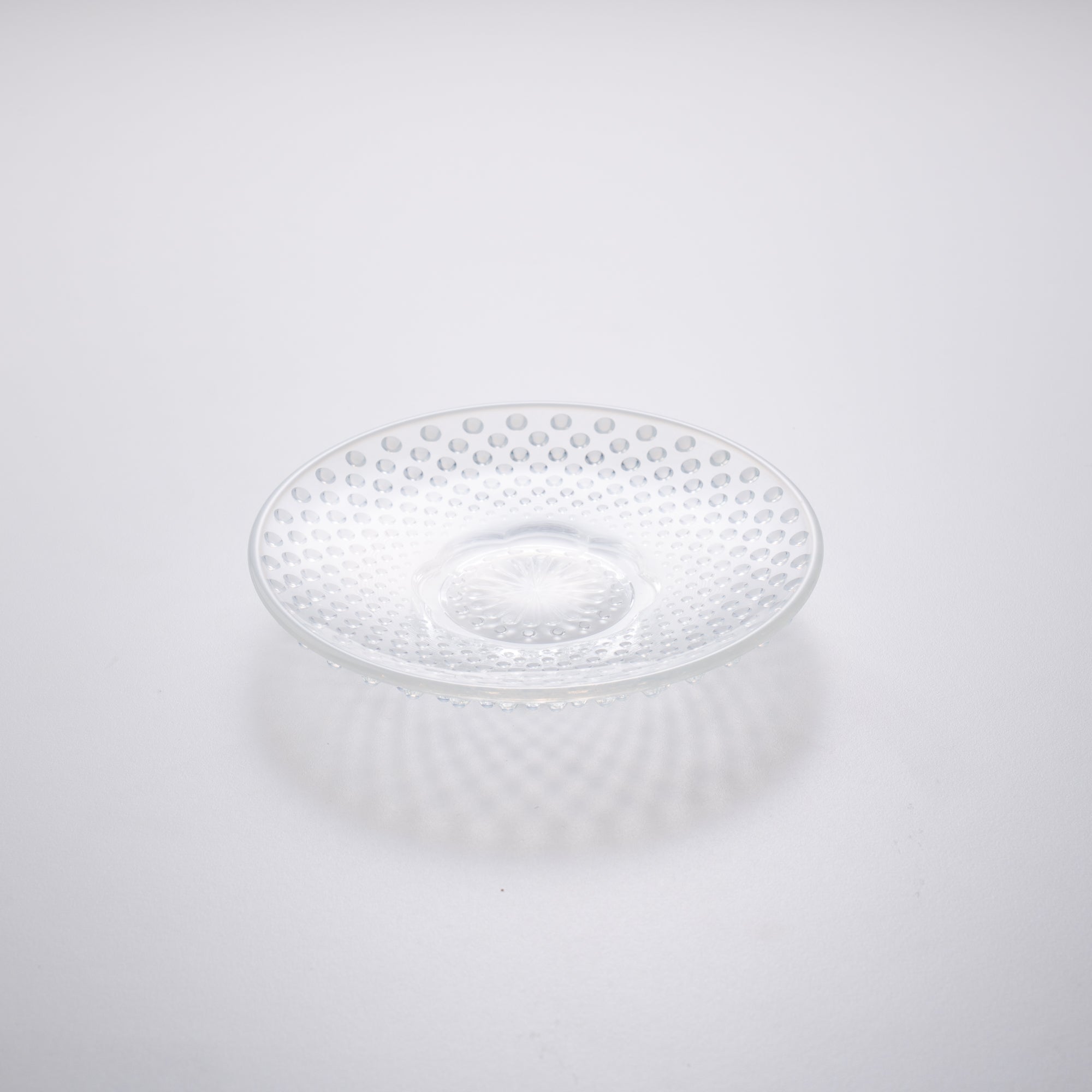
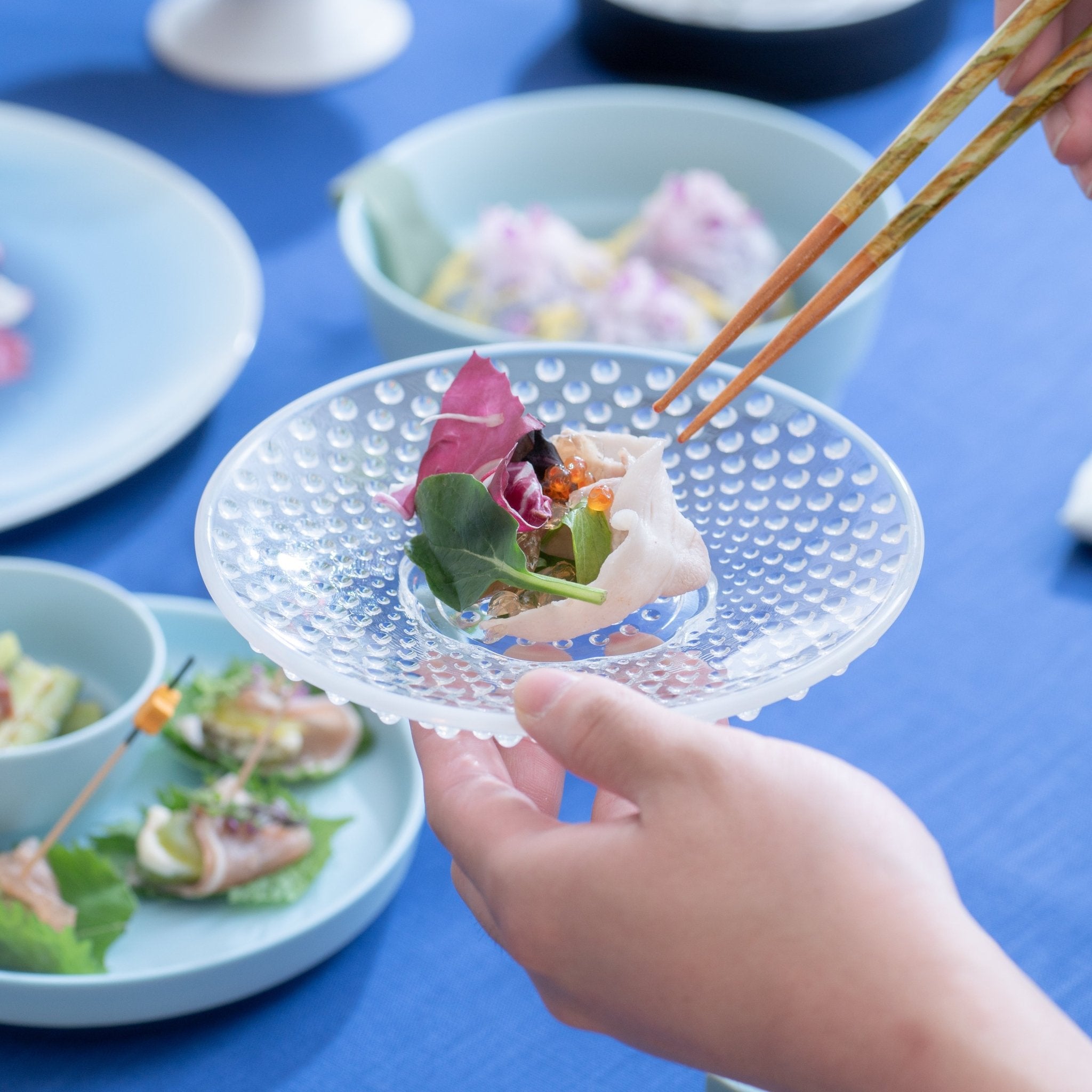
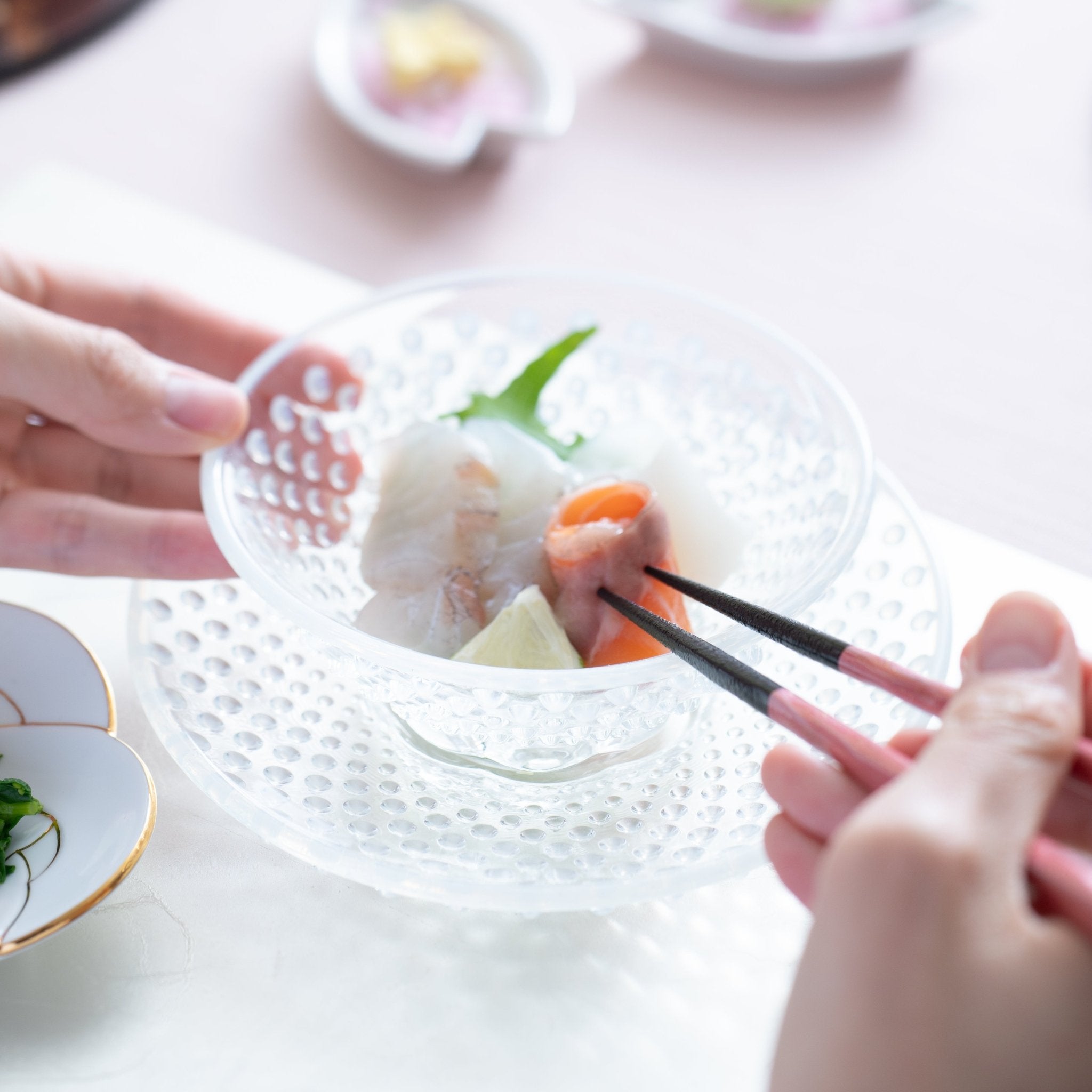
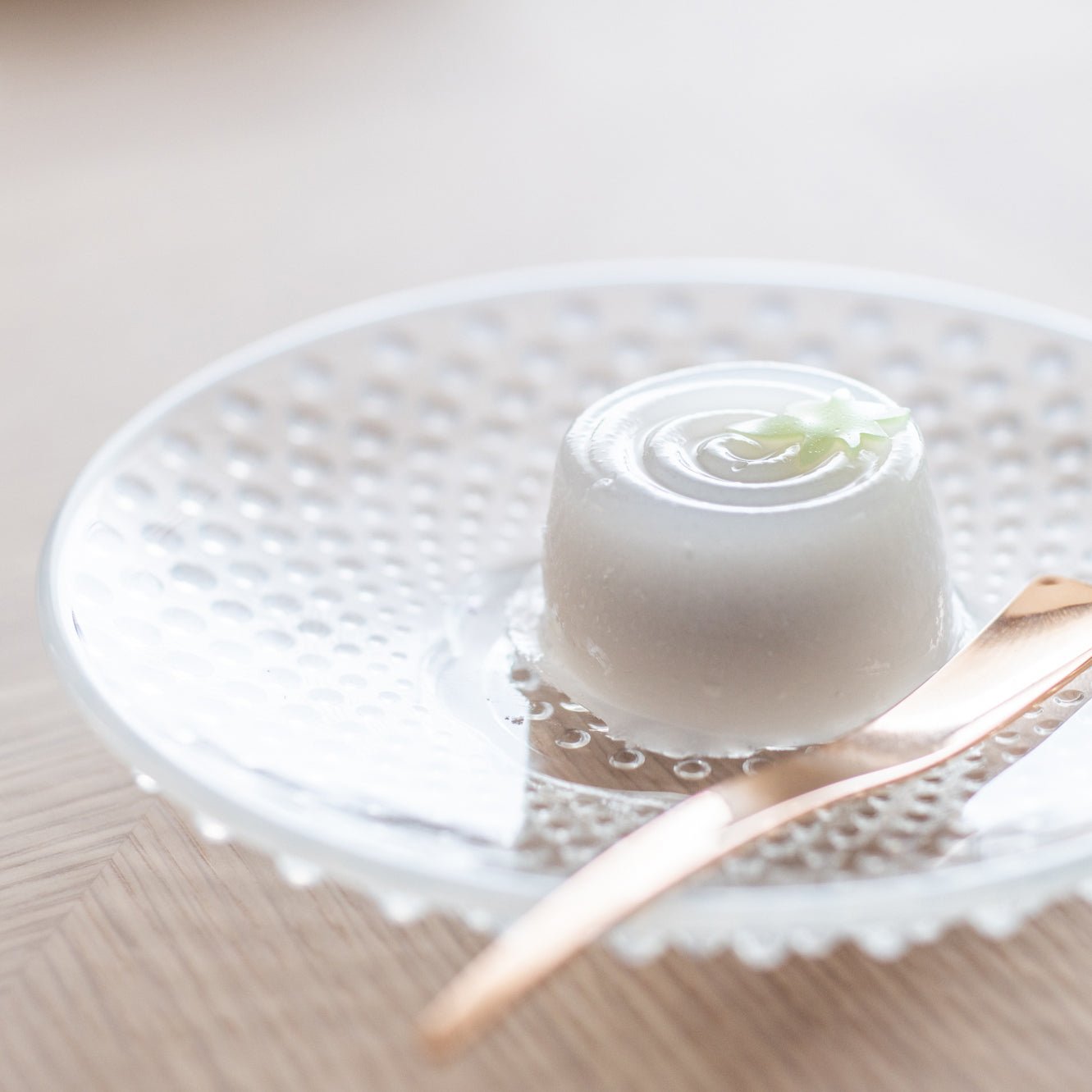
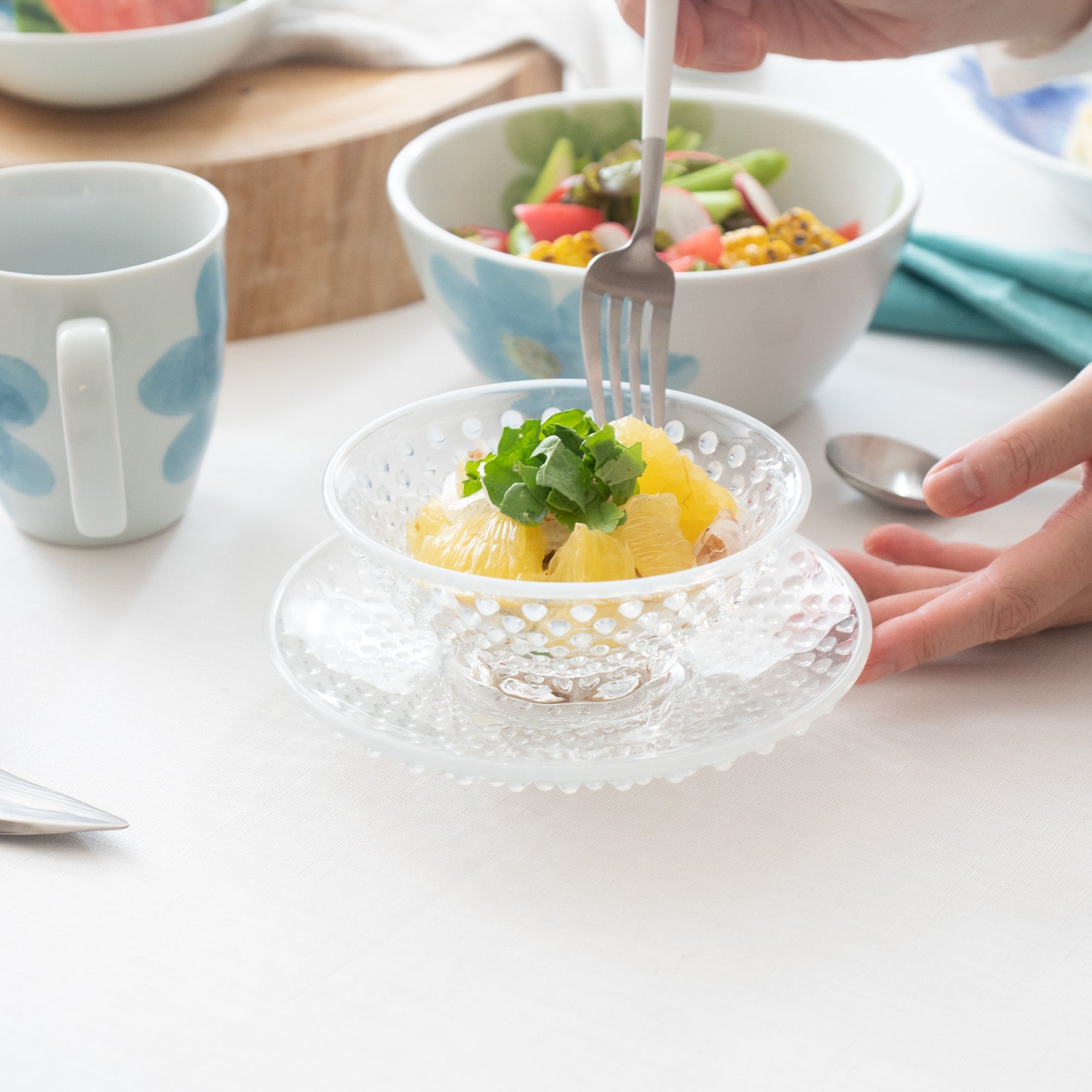
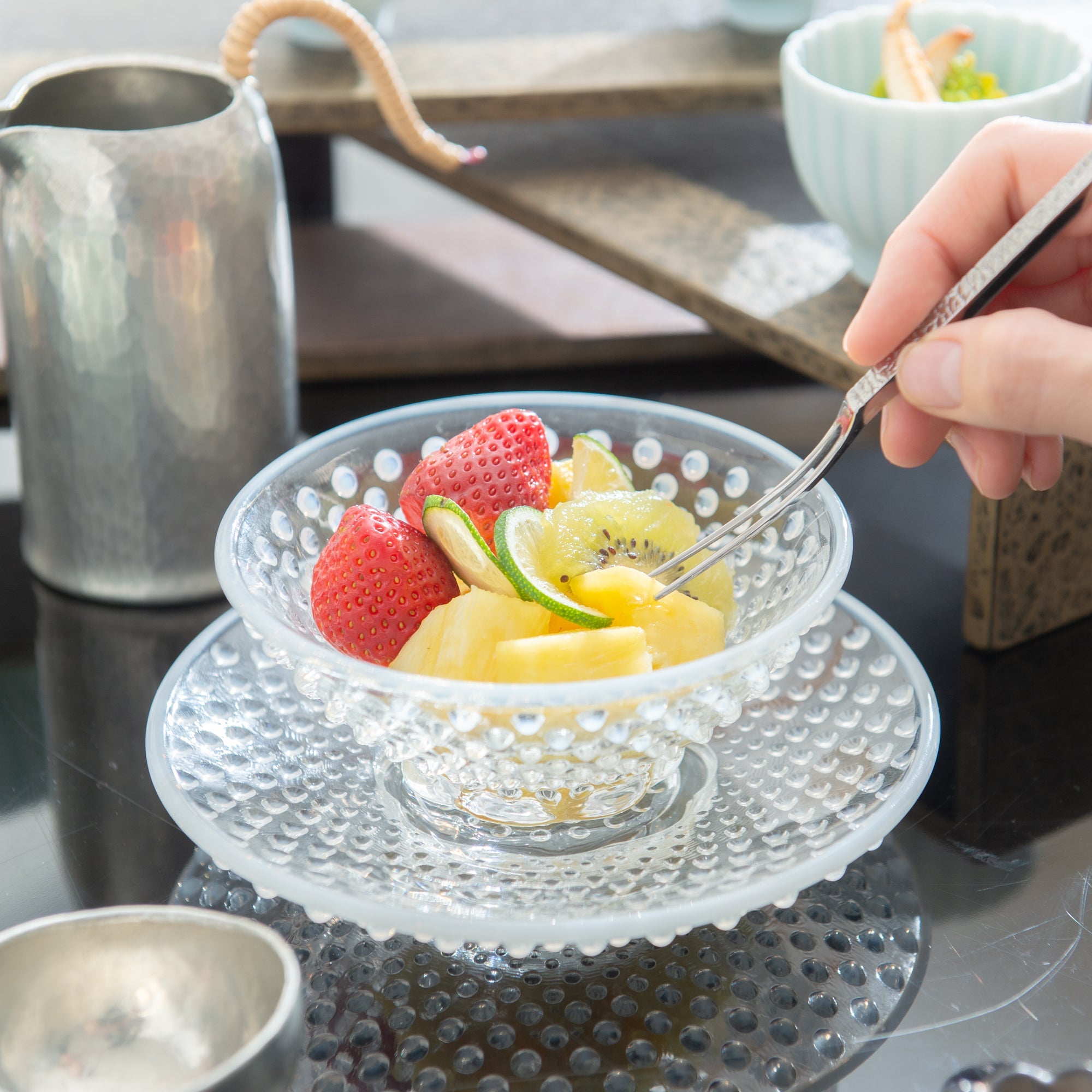
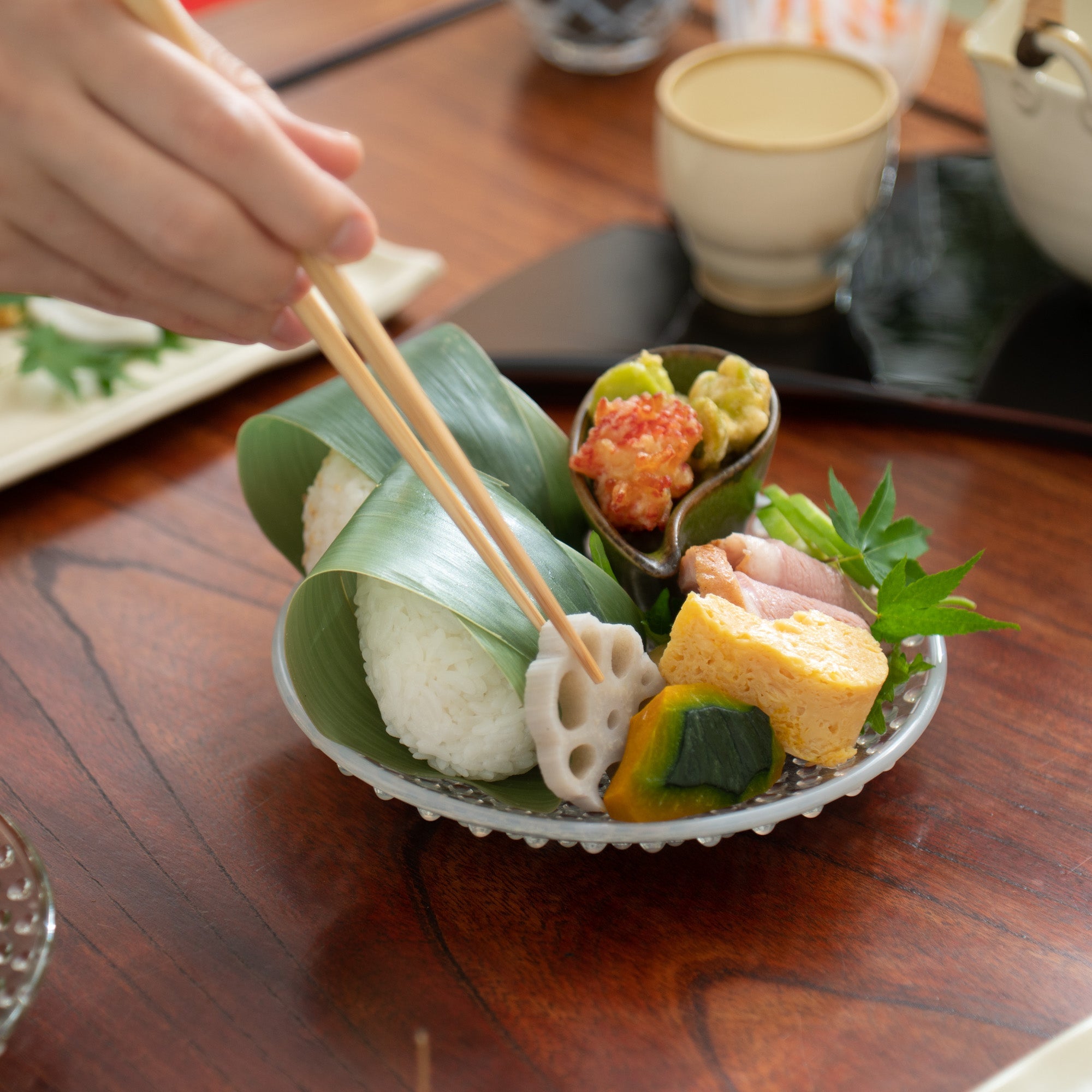
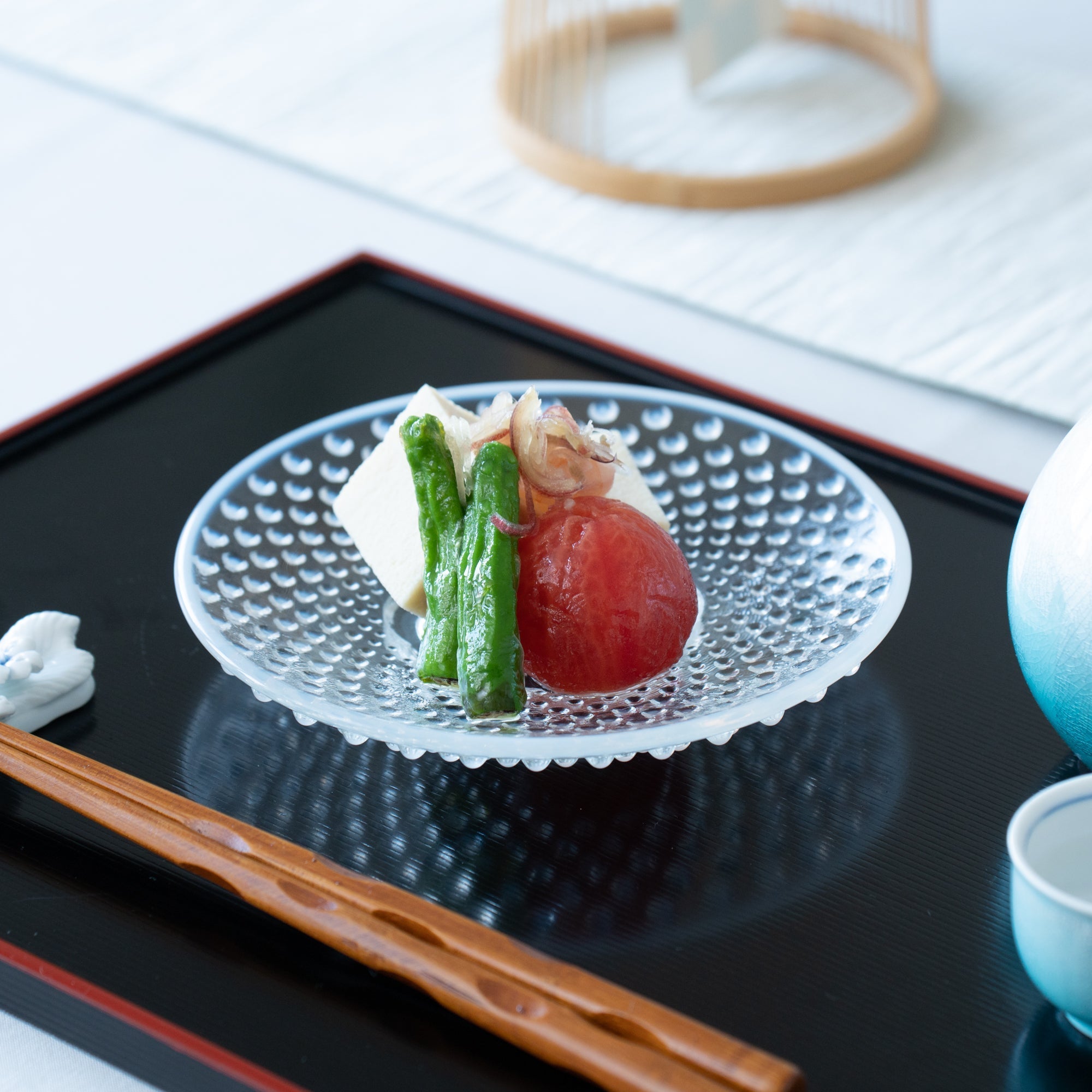
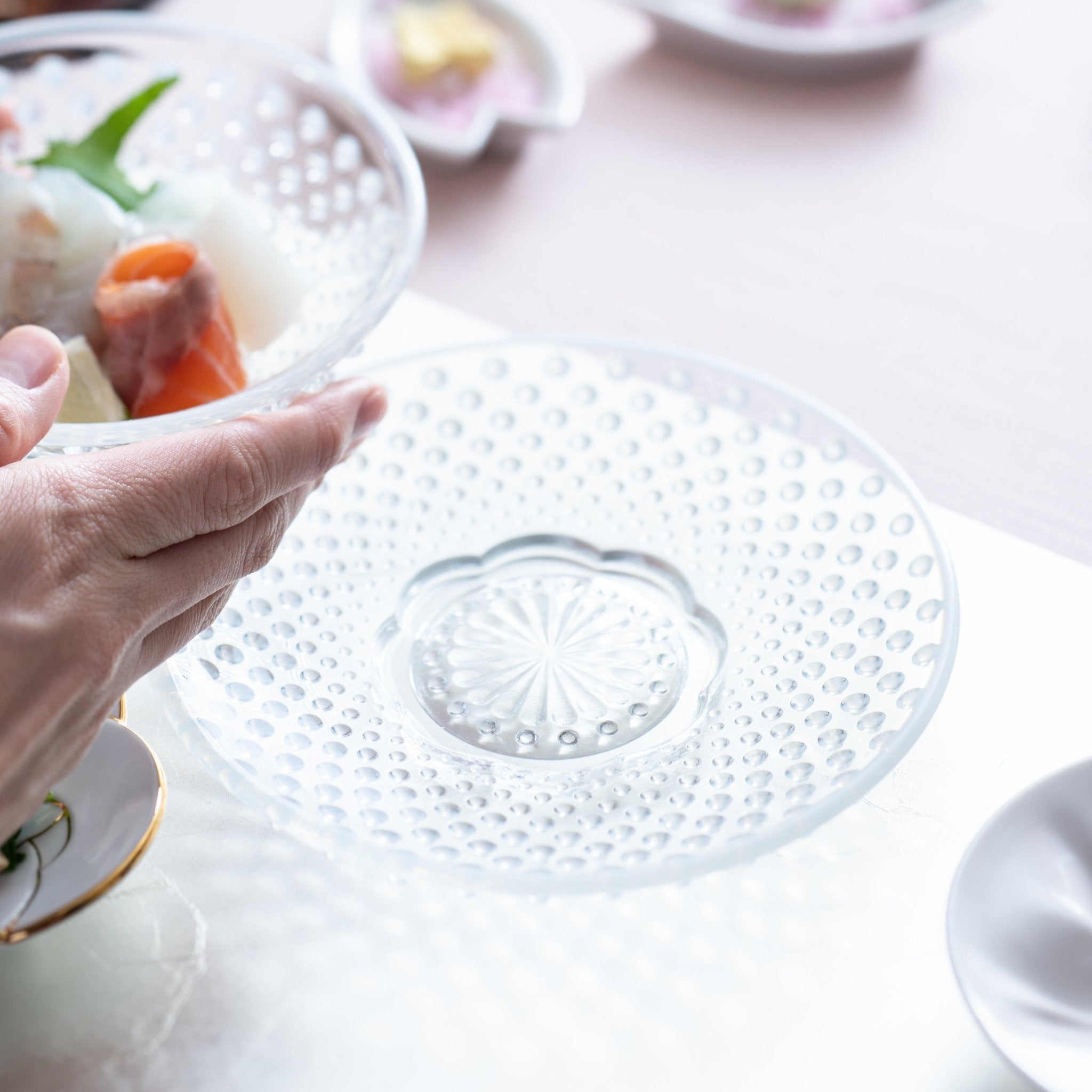
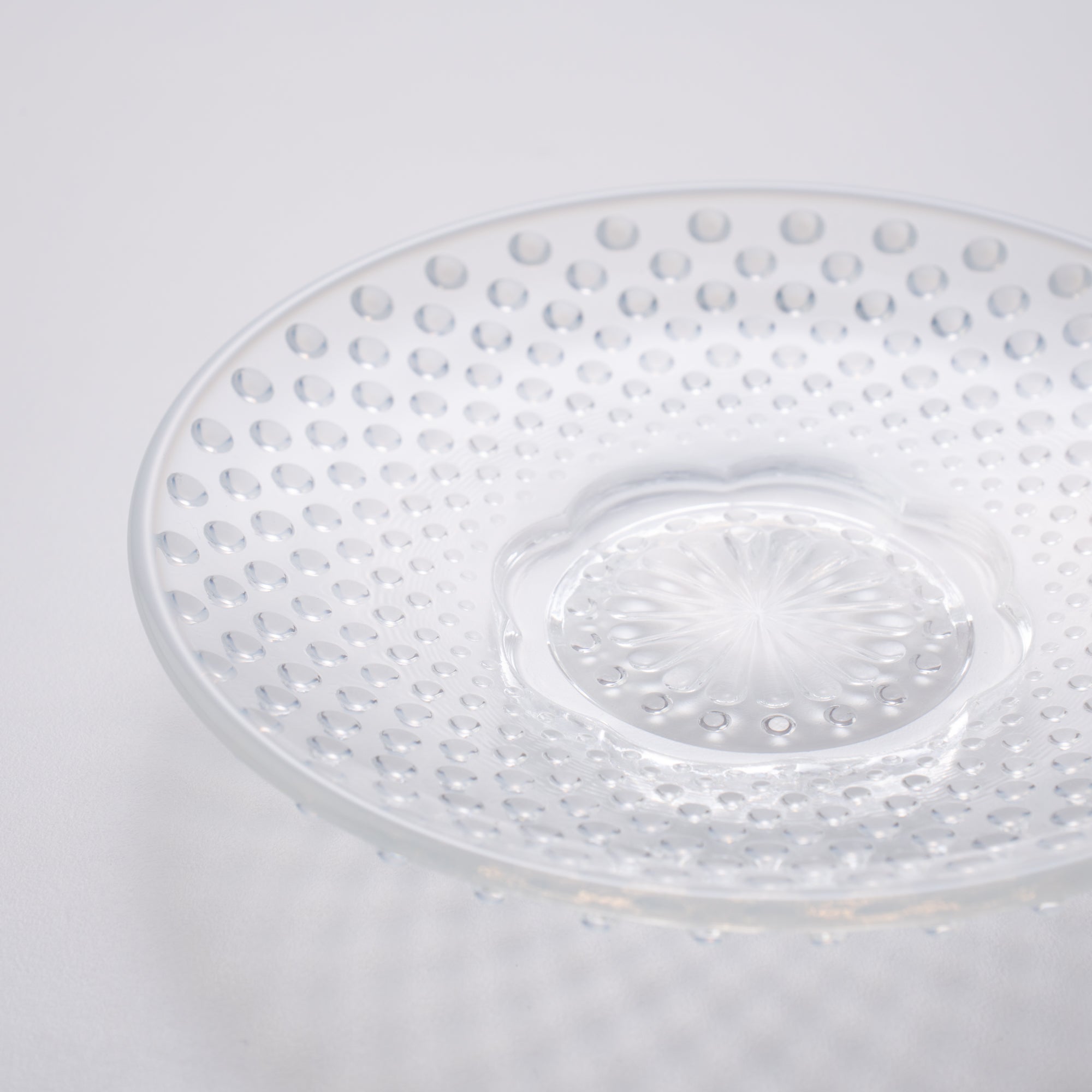
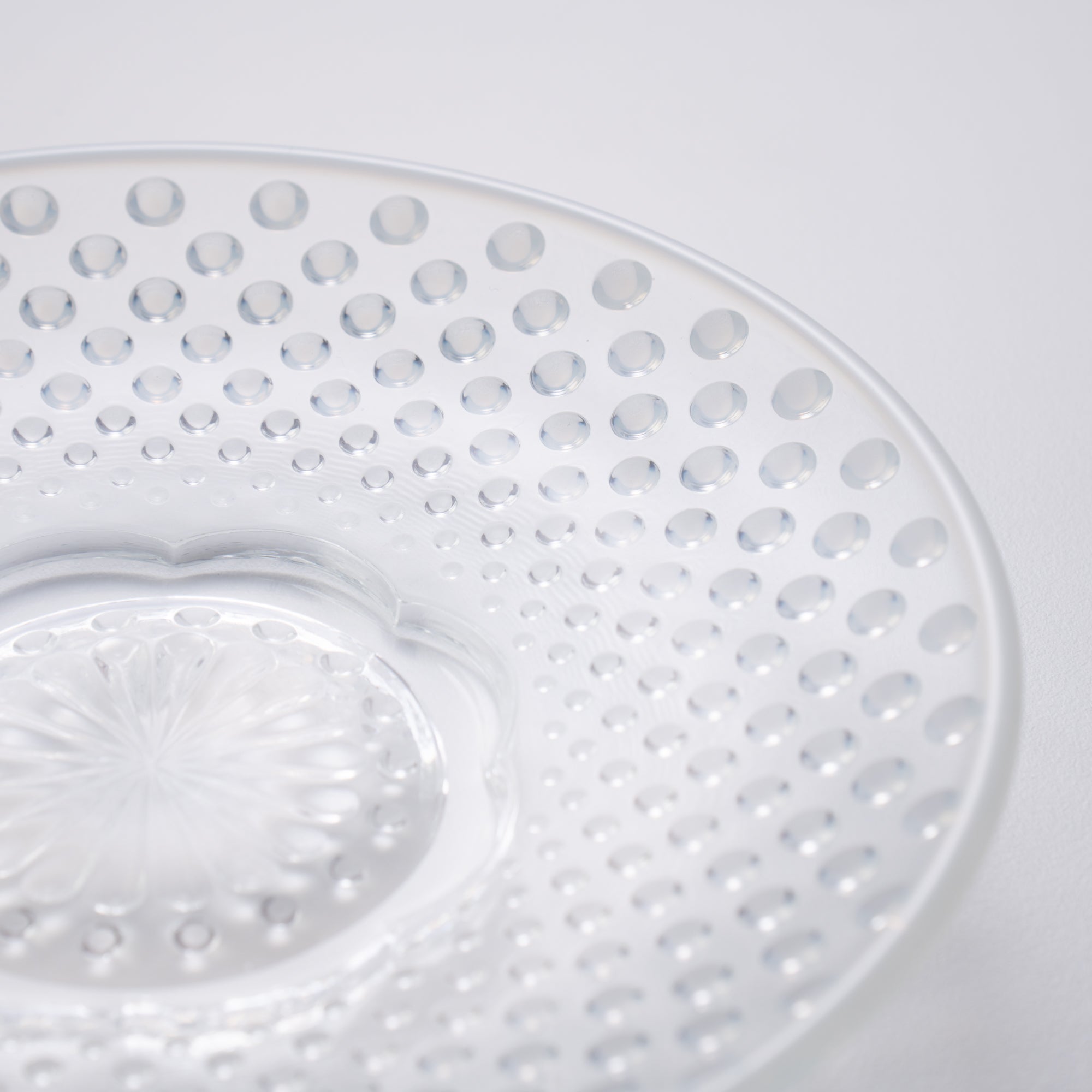
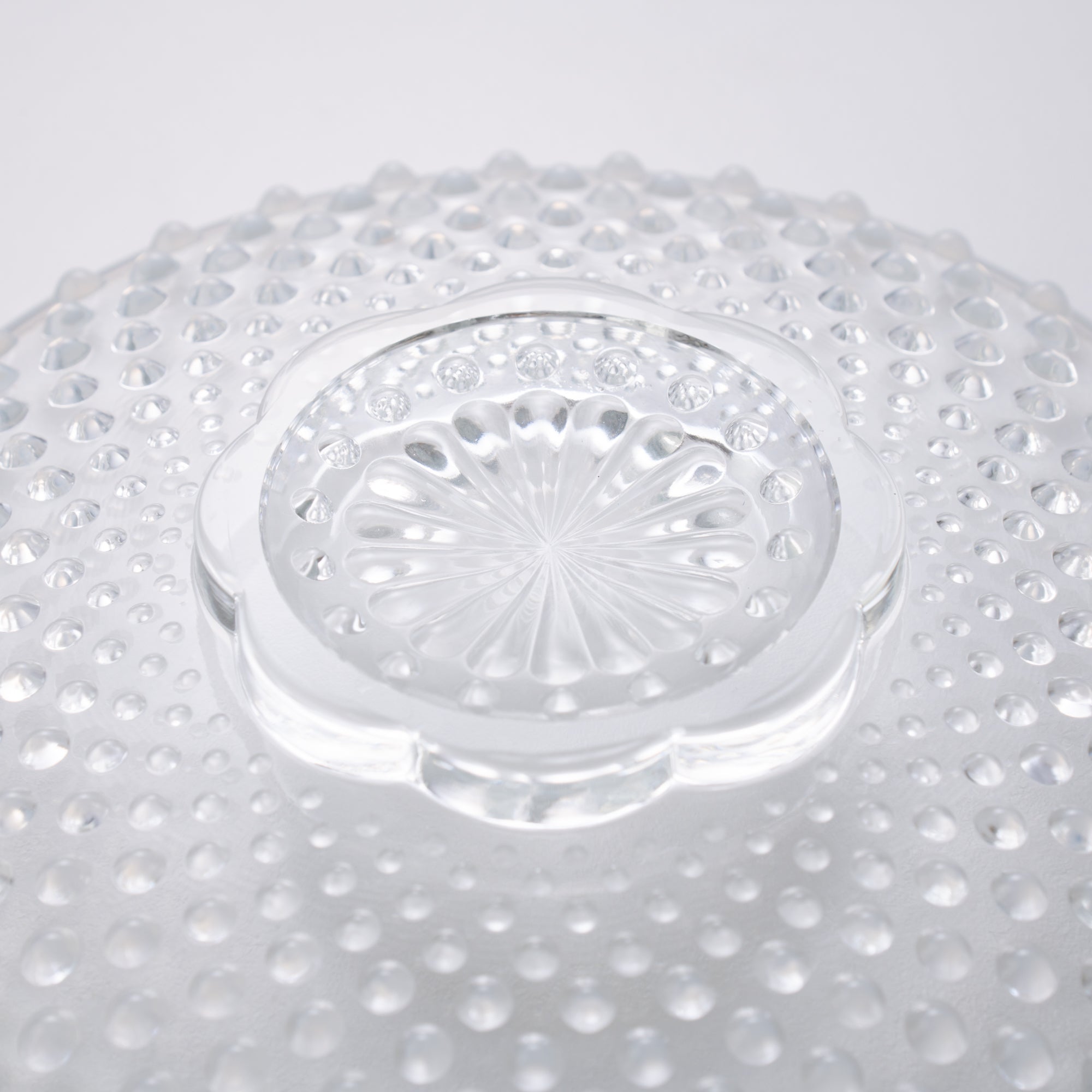
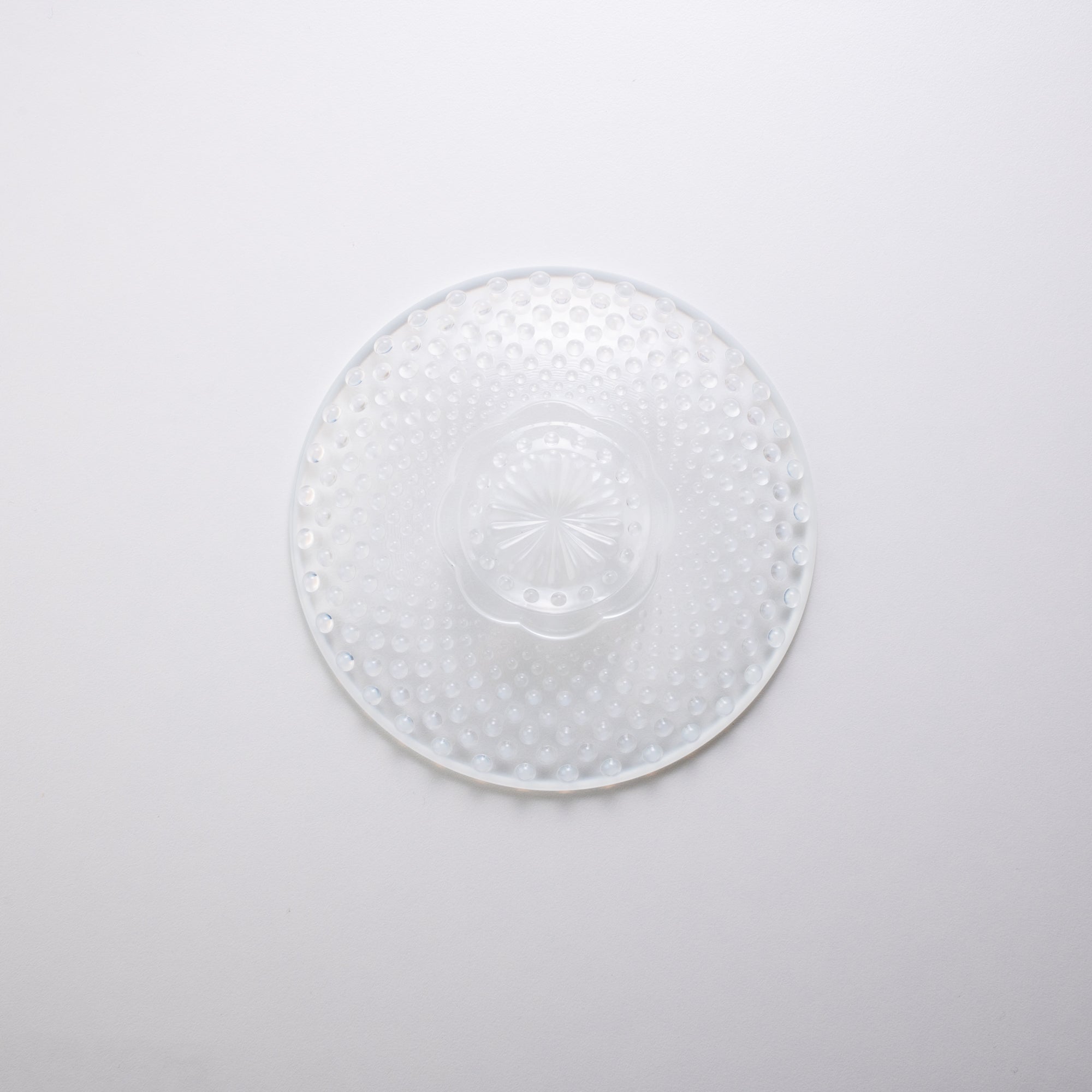
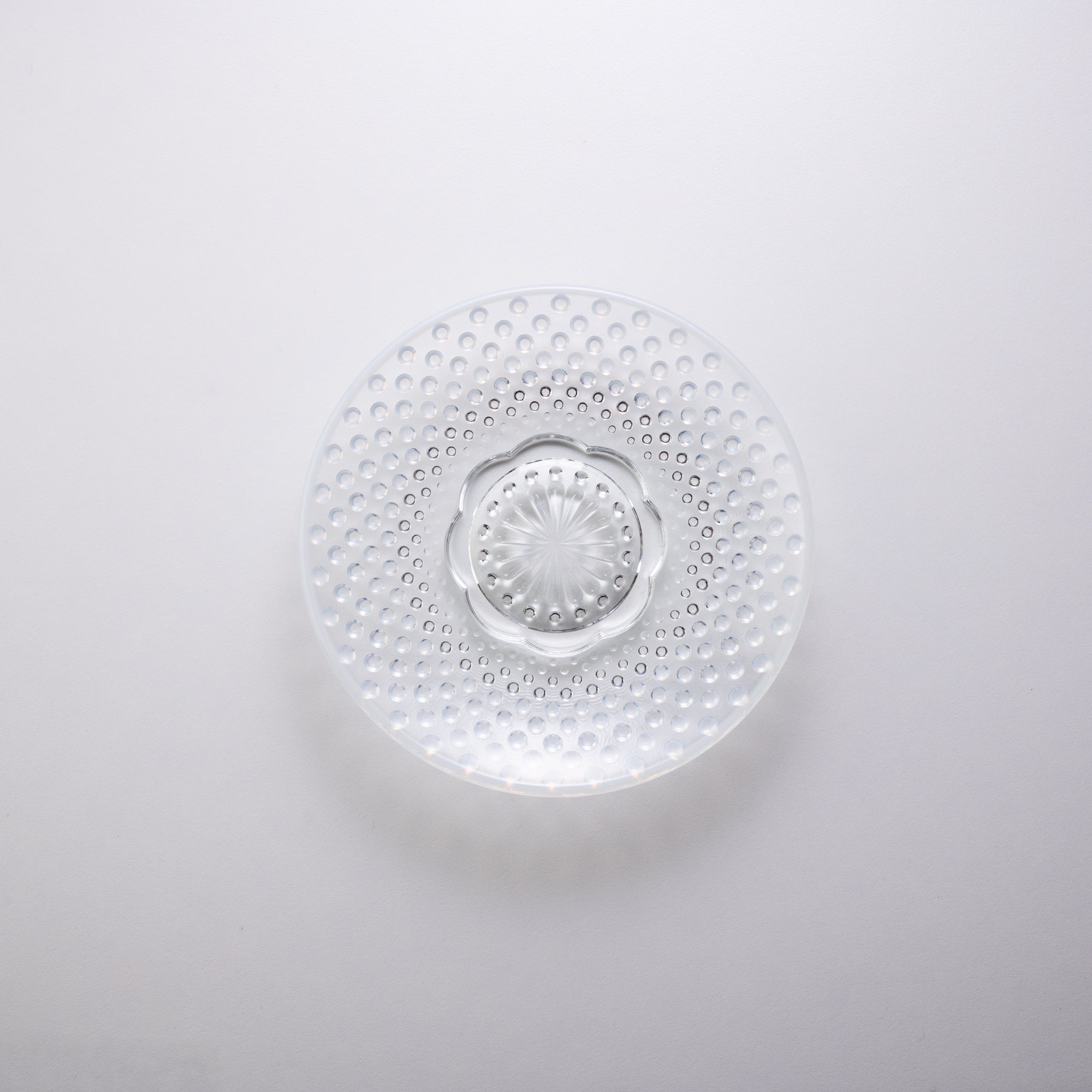
Arare Pattern Side Plate
Estimated Shipping Widget will be displayed here!
This Edo glass side plate features a design reminiscent of plum blossoms in the center of a shimmering, bumpy dot pattern known as arare.
The size is perfect for serving appetizers, side dishes, desserts or fruits. It is especially recommended for serving cold food, as it allows the cool atmosphere of the glass to shine through.
This piece is recommended as a gift or for home use.
The arare pattern refers to the design used in cast iron kettles, in which large and small dots are lined up in rows. It is a simple and beautiful pattern of dots lined up in rows, and has long been loved in Japan.
However, expressing this pattern in glass required a high level of technical skill. During the mid-Edo period (1603-1868 CE), pressed glass with patterns of bumpy dots was imported from overseas to Japan, but it was produced with a great deal of industrial technique and craftsmanship.
As Japanese glass technology improved over time, the bumpy dot pattern was arranged with a Japanese flavor, and Japanese pressed glass, more clearly engraved than blown glass, became more durable and was produced in greater quantities due to high demand.
DETAILS
| Quantity | 1 |
| Size | D 15.8cm (6.2in) × H 2.8cm (1.1in) |
| Material | Glass |
| Microwave | No |
| Dishwasher | Yes |
Maker / Brand
Founded in 1899 during Japan’s transformative Meiji era (1868–1912 CE), Hirota Glass stands as one of Tokyo’s oldest glassmakers. With over a century of expertise, the company preserves the delicate techniques of Edo glass and Edo Kiriko while reimagining classic styles. From soft Taisho-era (1912–1926 CE) curves to modern reinterpretations, each piece embodies a dedication to beauty, function, and traditional Japanese charm.
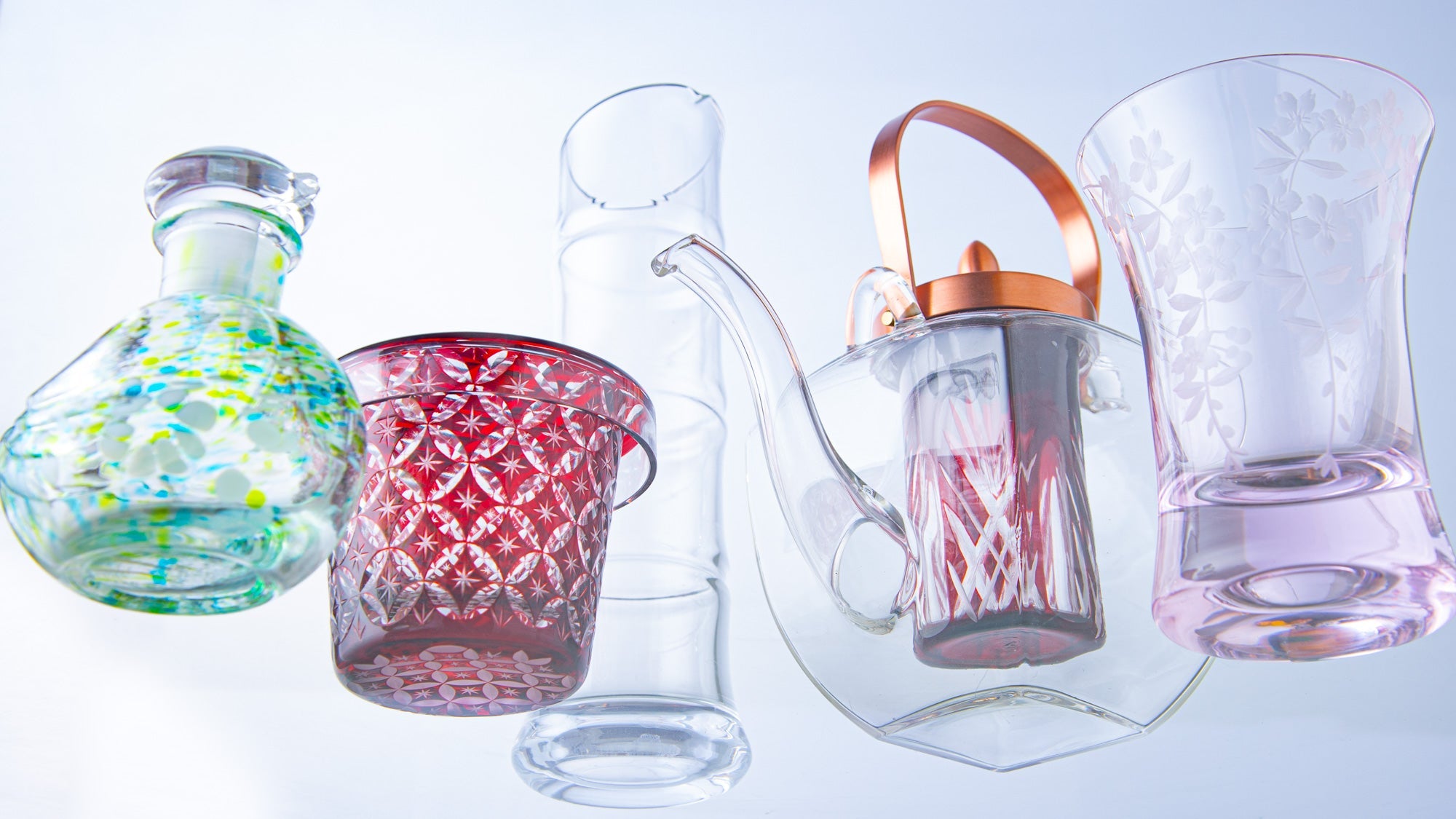
Crafts
Tokyo, the capital of Japan, is also a hub of craftsmanship. Among its many traditions, Edo Glass and Edo Kiriko are types of glassware that have been passed down for around 200 years in Edo—the former name for central Tokyo.
Their luminous surfaces echo centuries of craftsmanship, born in what was once Edo and still thriving in modern Tokyo.
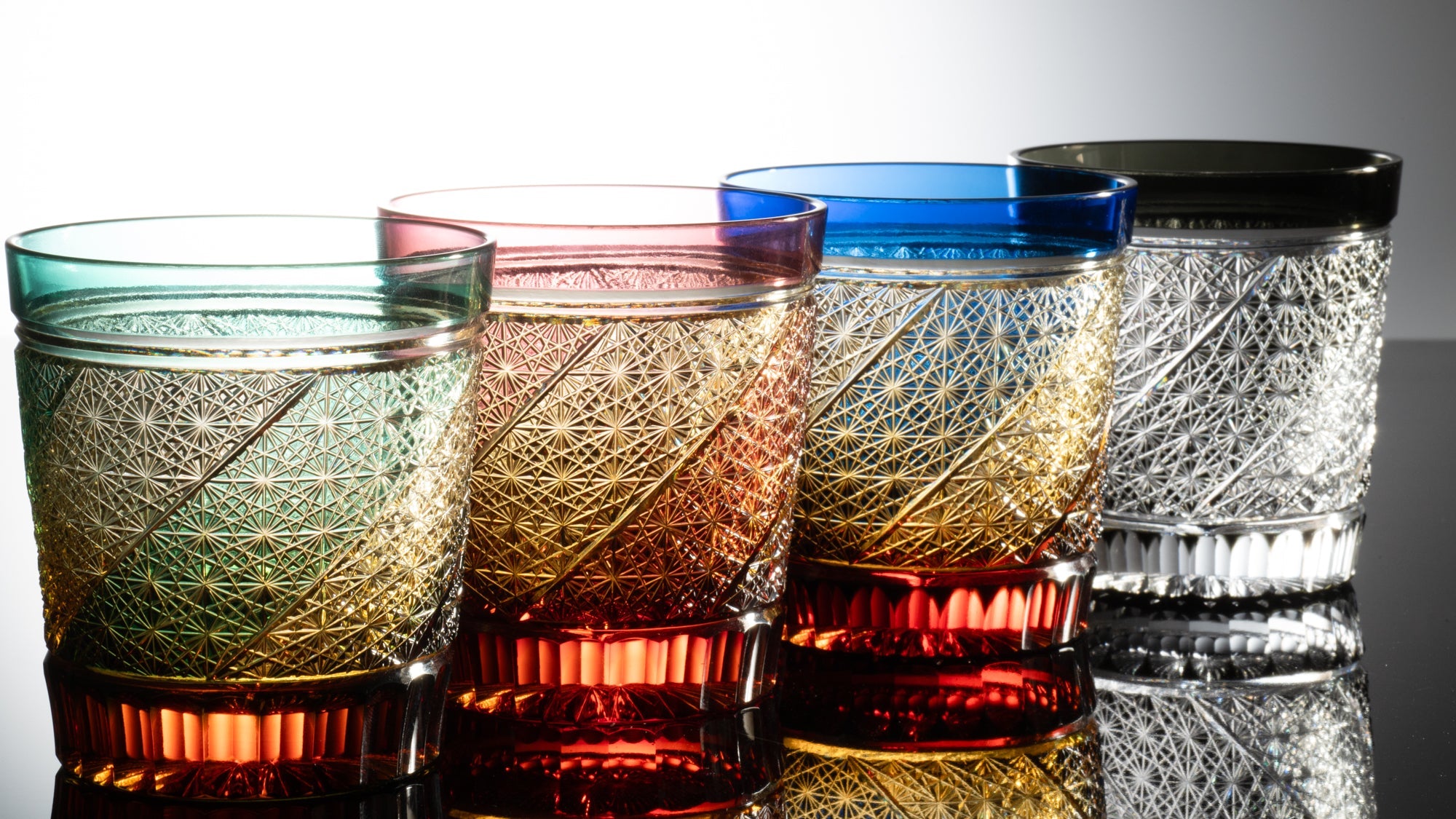
Choose options










































Side Plates
Bring a feeling of quality to your table with our collection of Japanese side plates, expertly crafted by artisans from all across Japan. A key element of an authentic Japanese table setting, the small plates in our selection are curated to fit any aesthetic, from cute and bright to classic and refined. These dishes showcase appetizers, snacks, breads, sweets, and side dishes like tofu, salad, or even slices of fish with ease and style.
This category features plates with diameters ranging from 13–20.9 cm (5.1–8.2 in).
